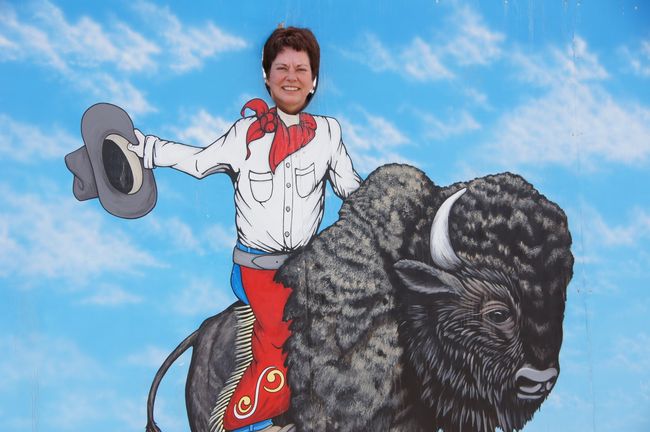Pronghorns, Mount Rushmore, Bisons in Custer State Park
ప్రచురించబడింది: 30.08.2019
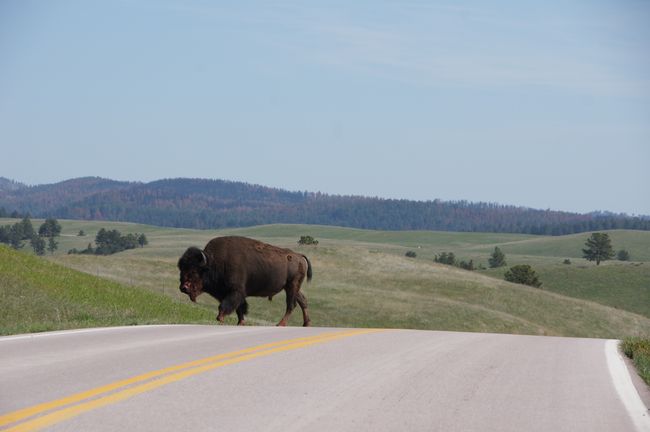
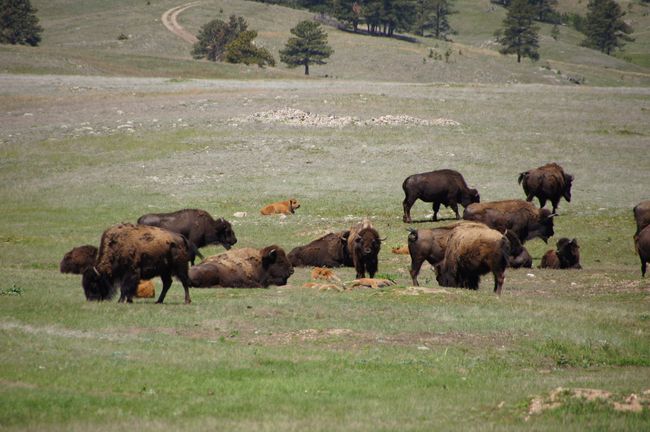
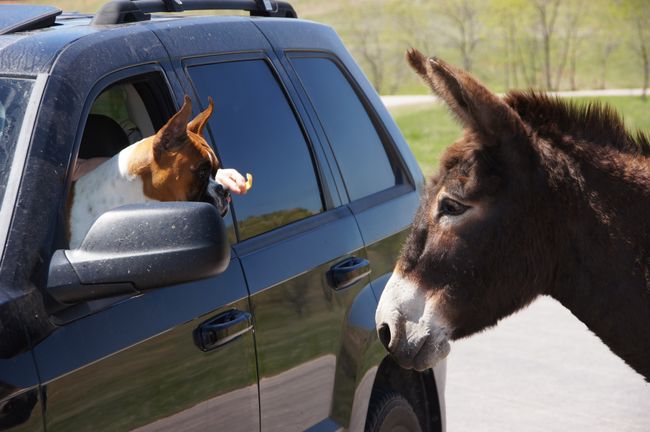
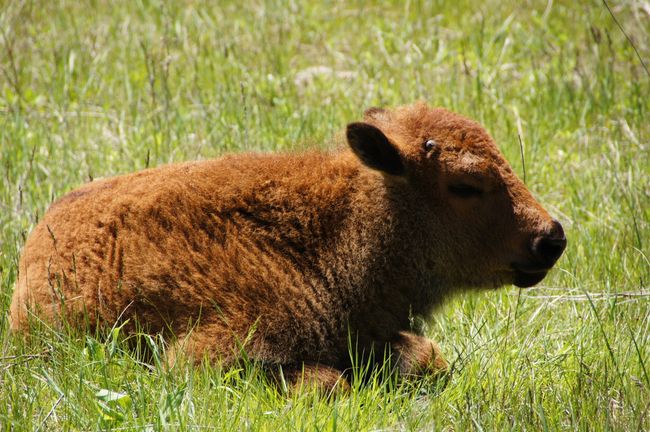
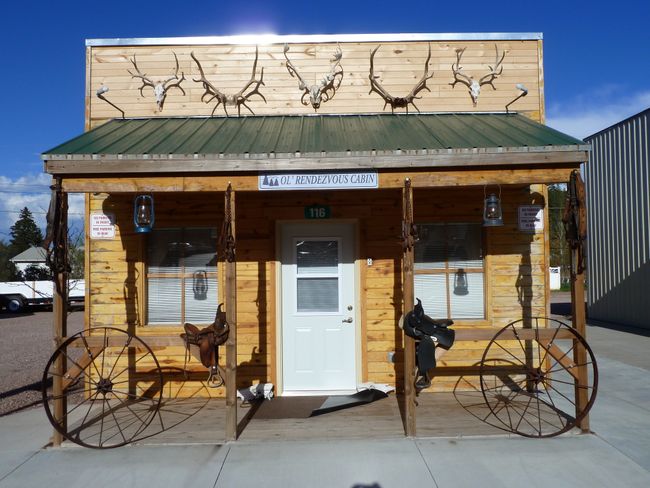
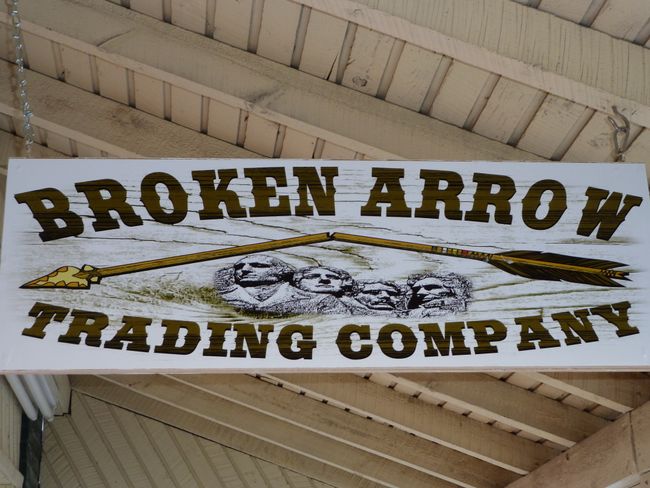
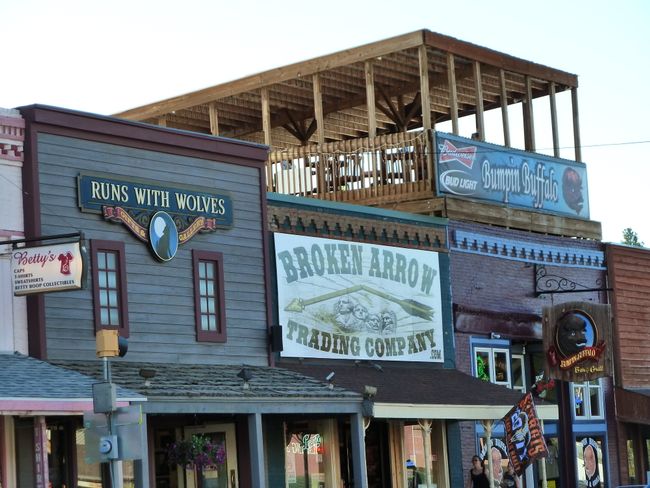
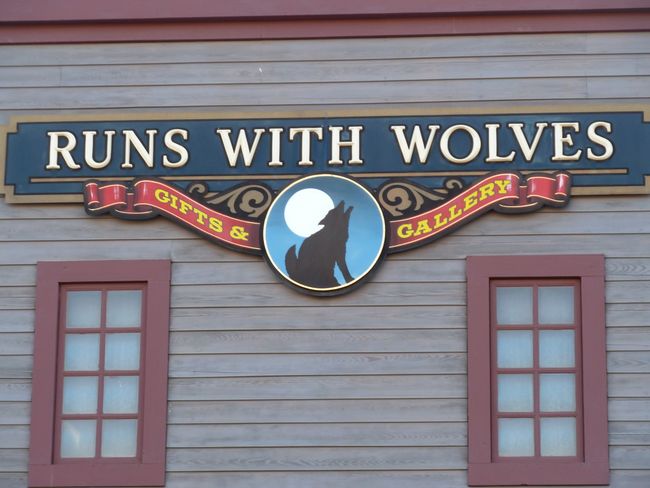
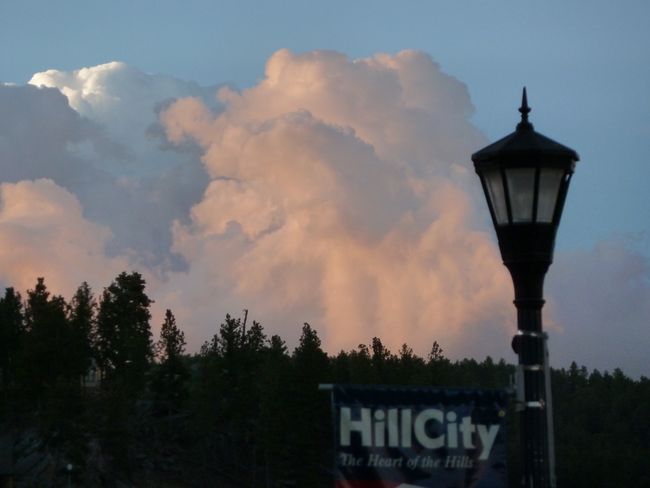
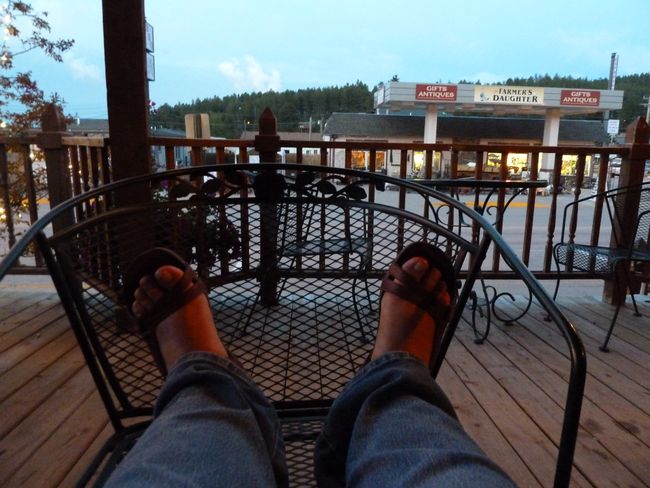
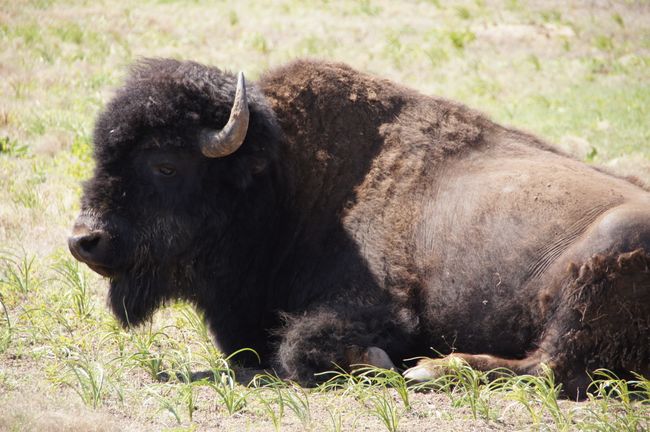
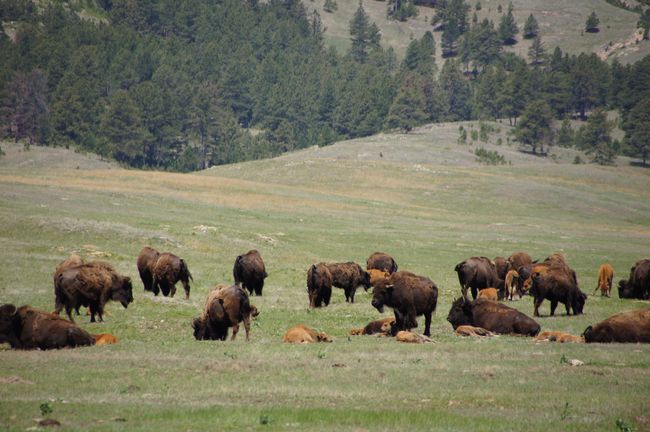
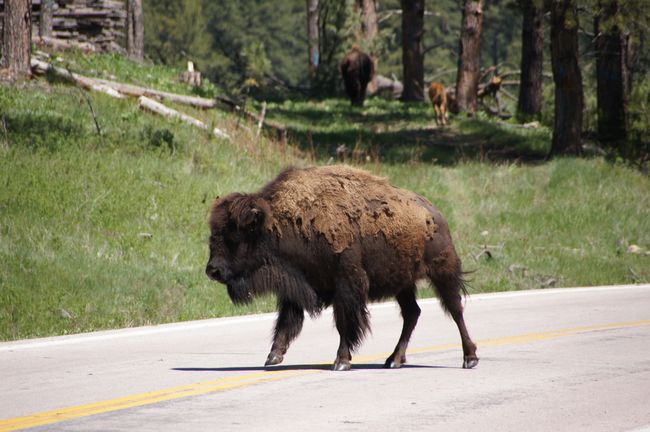
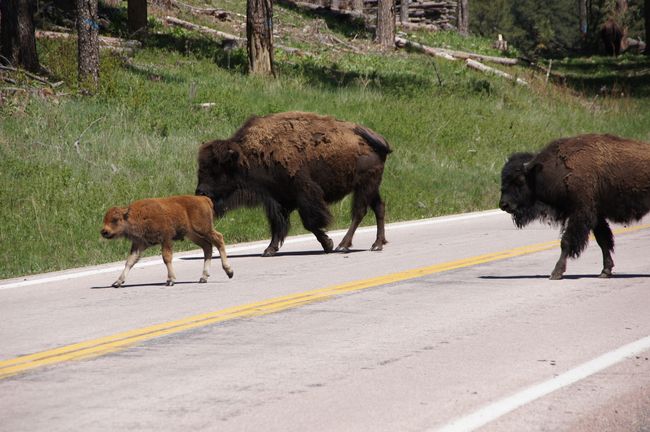
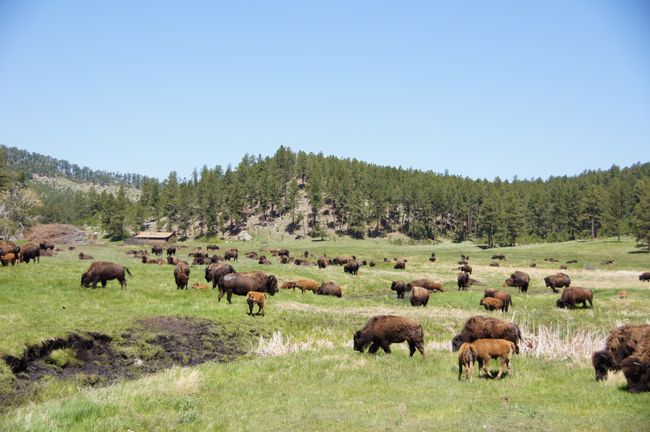
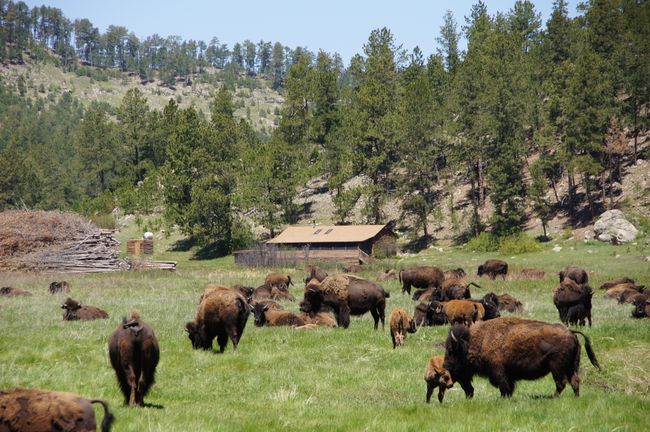
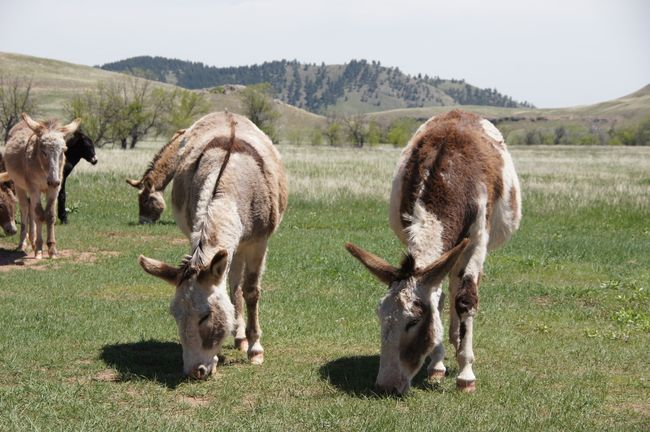
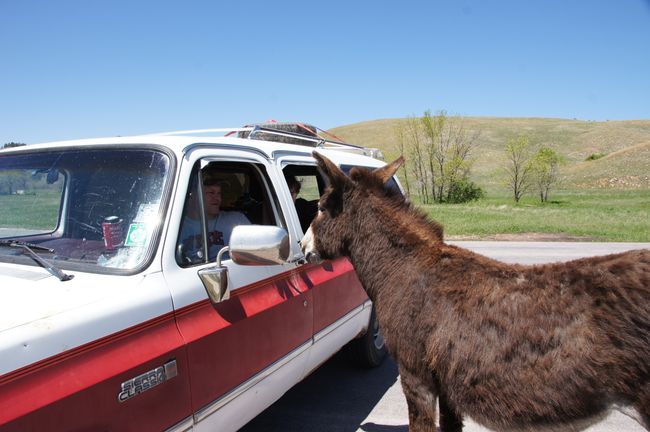
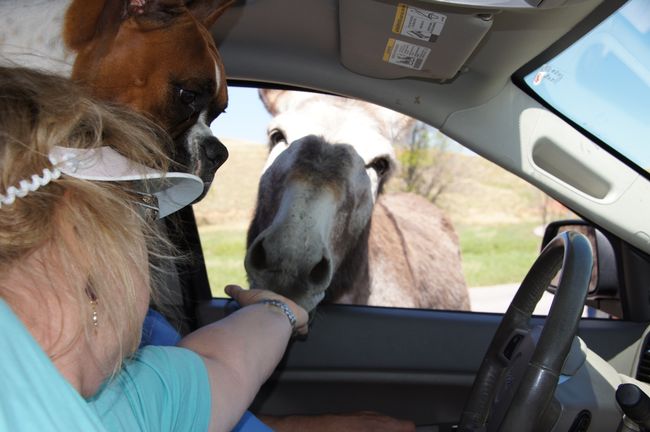
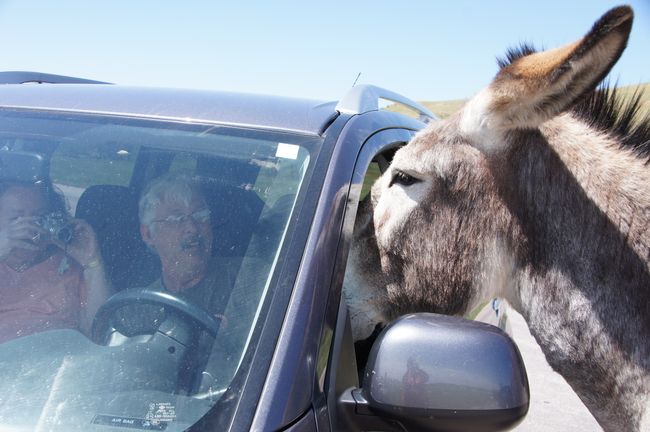
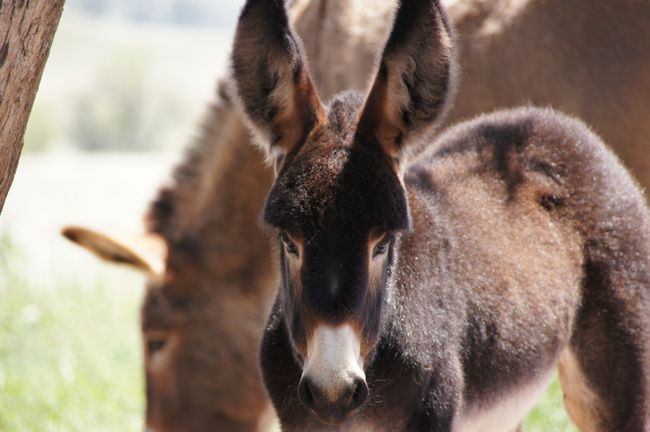
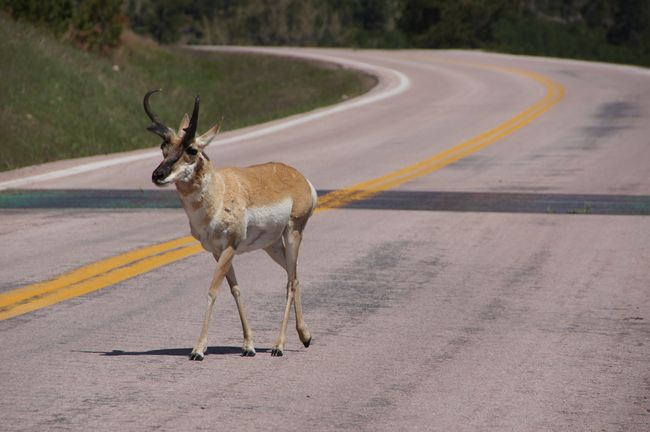
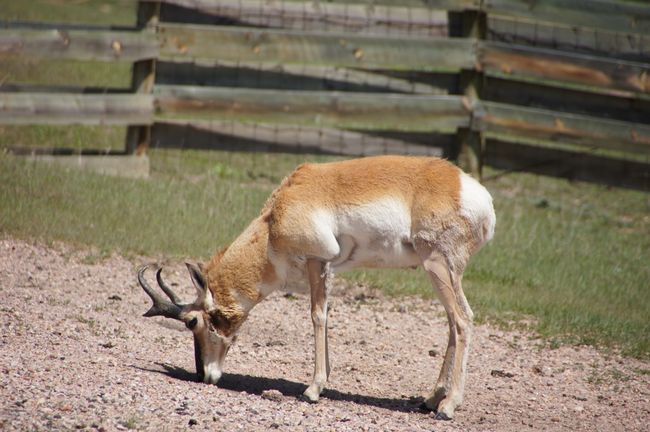
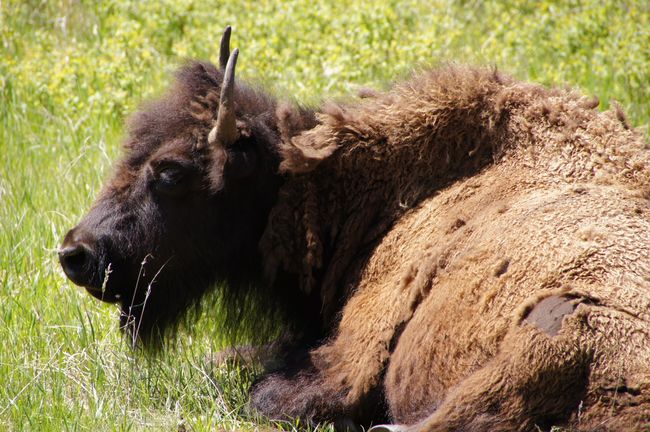
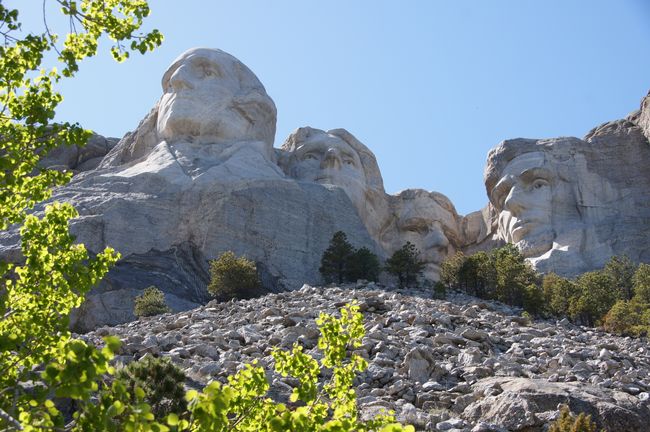
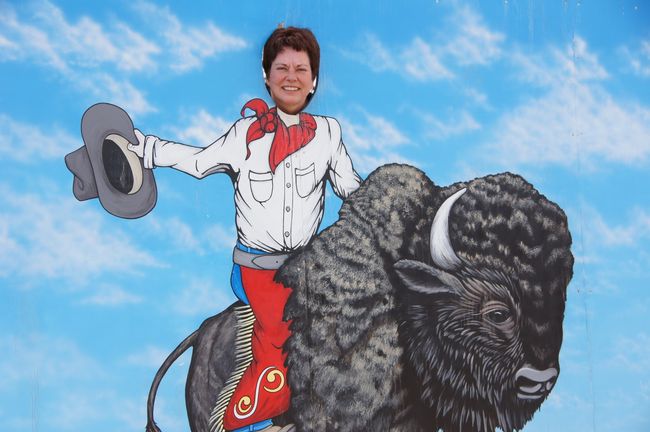
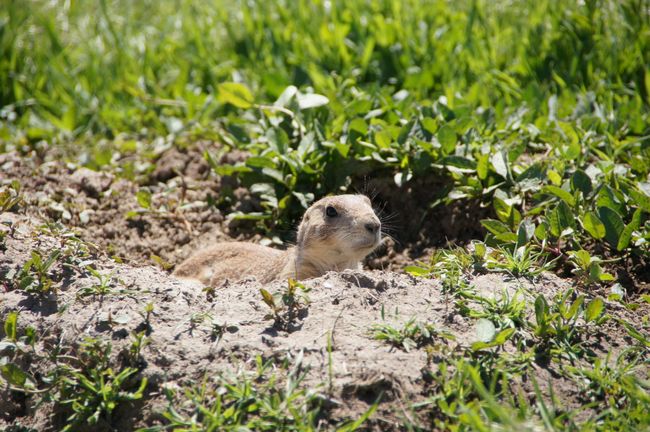
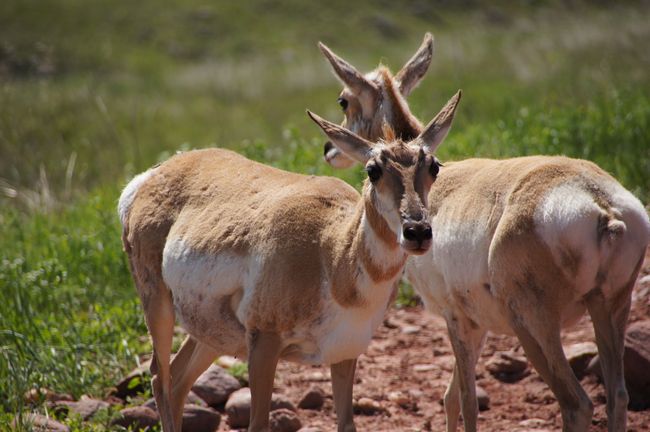
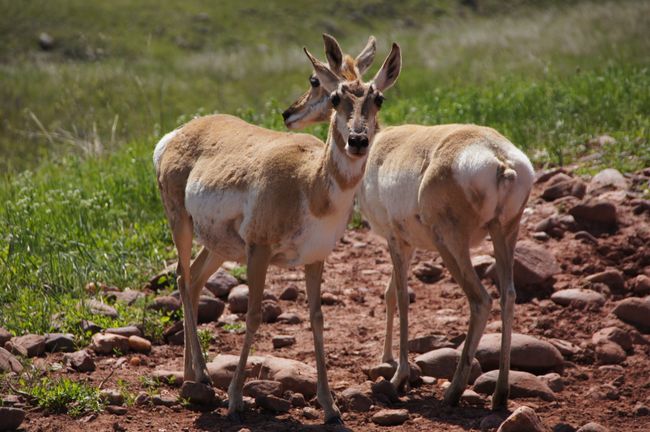
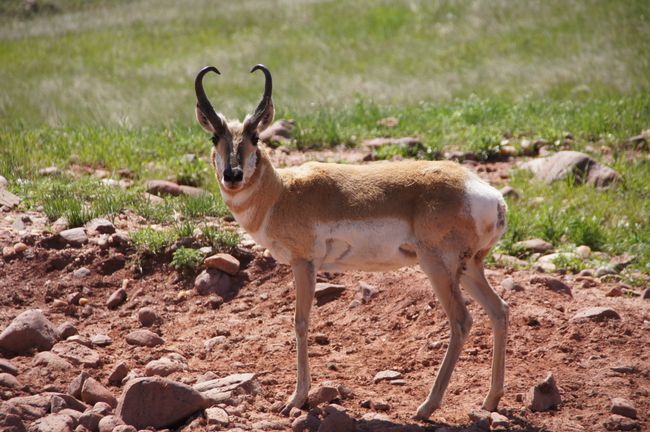
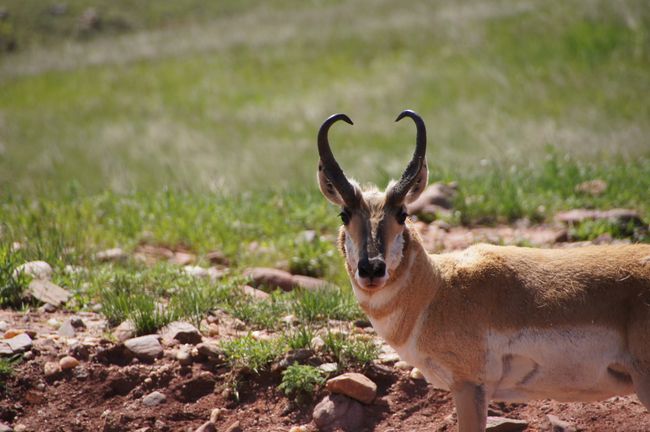
వార్తాలేఖకు సభ్యత్వాన్ని పొందండి
02.06. / Thursday / Hot Springs-Custer State Park – Mount Rushmore – Hill City
We are in the car at 09:30 and surprised by the warmth and nearly 60% humidity. Hot Springs is only 1,300m high, we have never been so low since arriving in the USA.
First, we drive through Wind Cave Park, we are not interested in its caves, but we quickly see Pronghorns in the vast, gently rolling landscape. They move gracefully like antelopes and are often mistaken for Pronghorn Antelopes. They are called Gabelböcke in German.
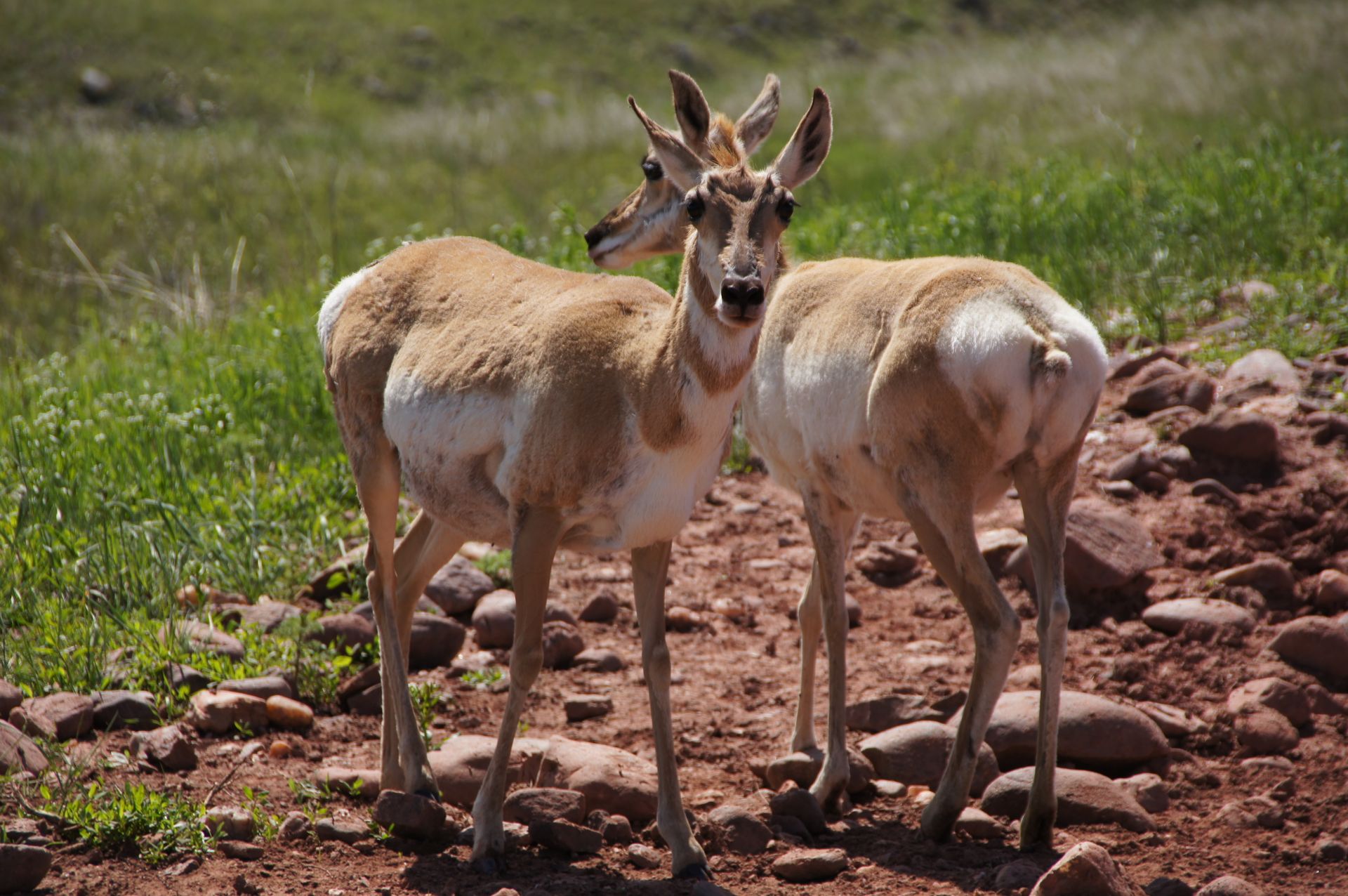

These animals are the fastest mammals in the Americas when considering a distance of 5km. They are often compared to cheetahs in terms of speed. They can run easily at speeds of 60-70 km/h. Speeds over 85 km/h have also been recorded. Their speed is owed to their slender physique and increased heart and lung size relative to the animal's overall size. Despite being lighter and often appearing smaller, a Pronghorn's heart is twice as big as a sheep's heart.
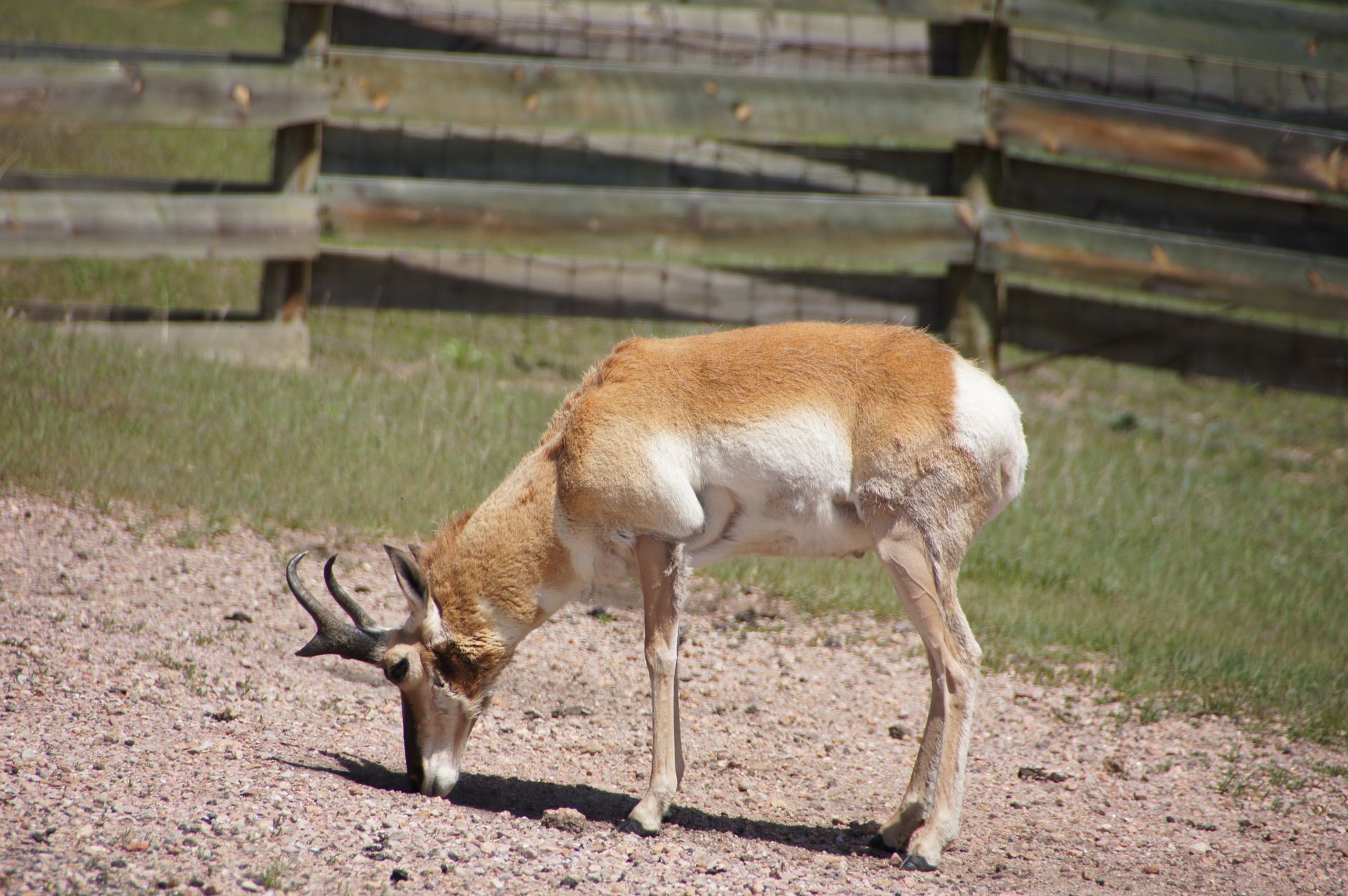
Naturally, this ability, combined with their impressive jumping ability, helps them escape from natural enemies.
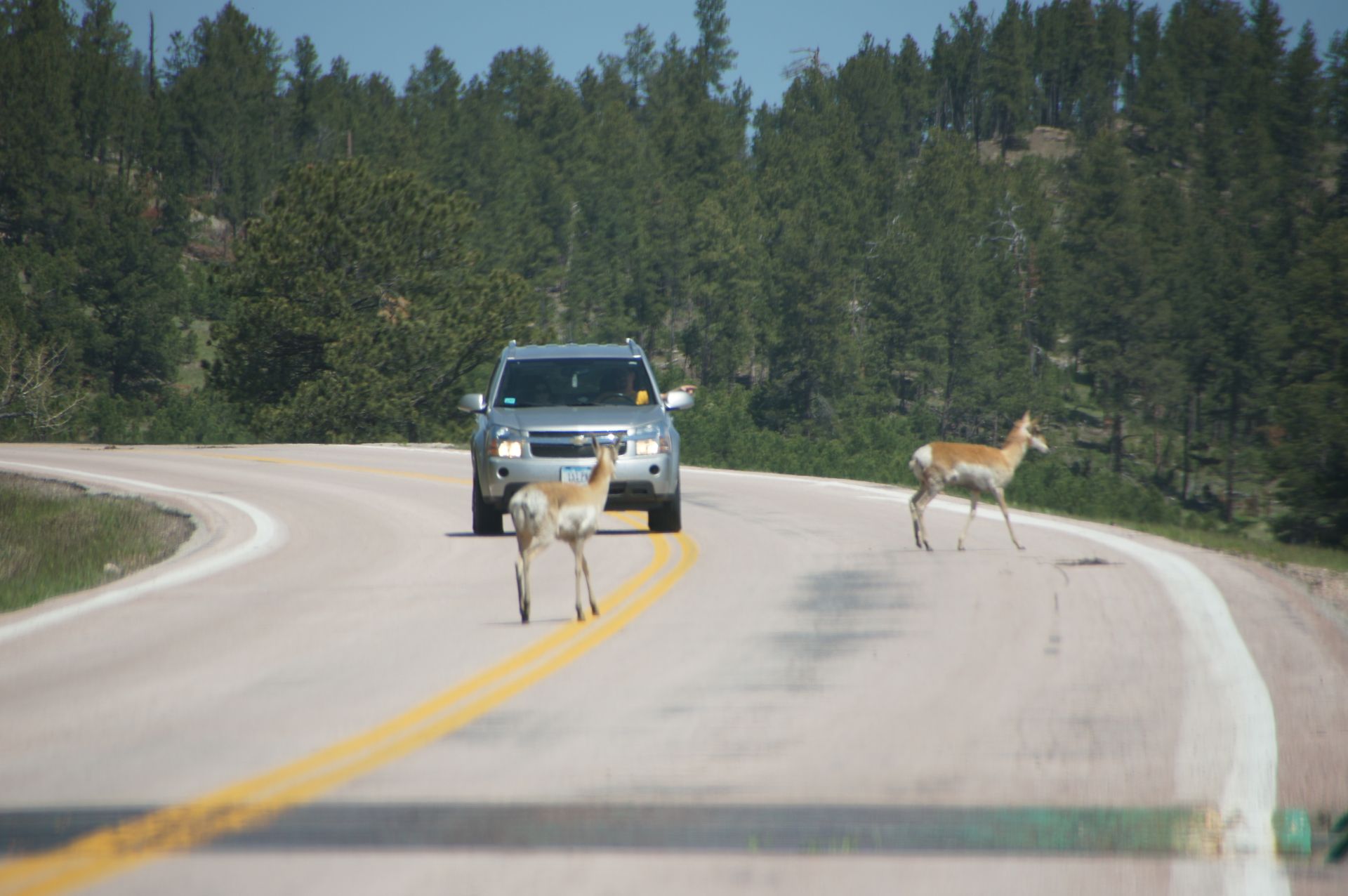
We like these animals, they are very beautiful and often stand peacefully at watering holes. We see them a lot on our trip, but this is the first time here. They are plains animals, but they can also be found at higher altitudes.
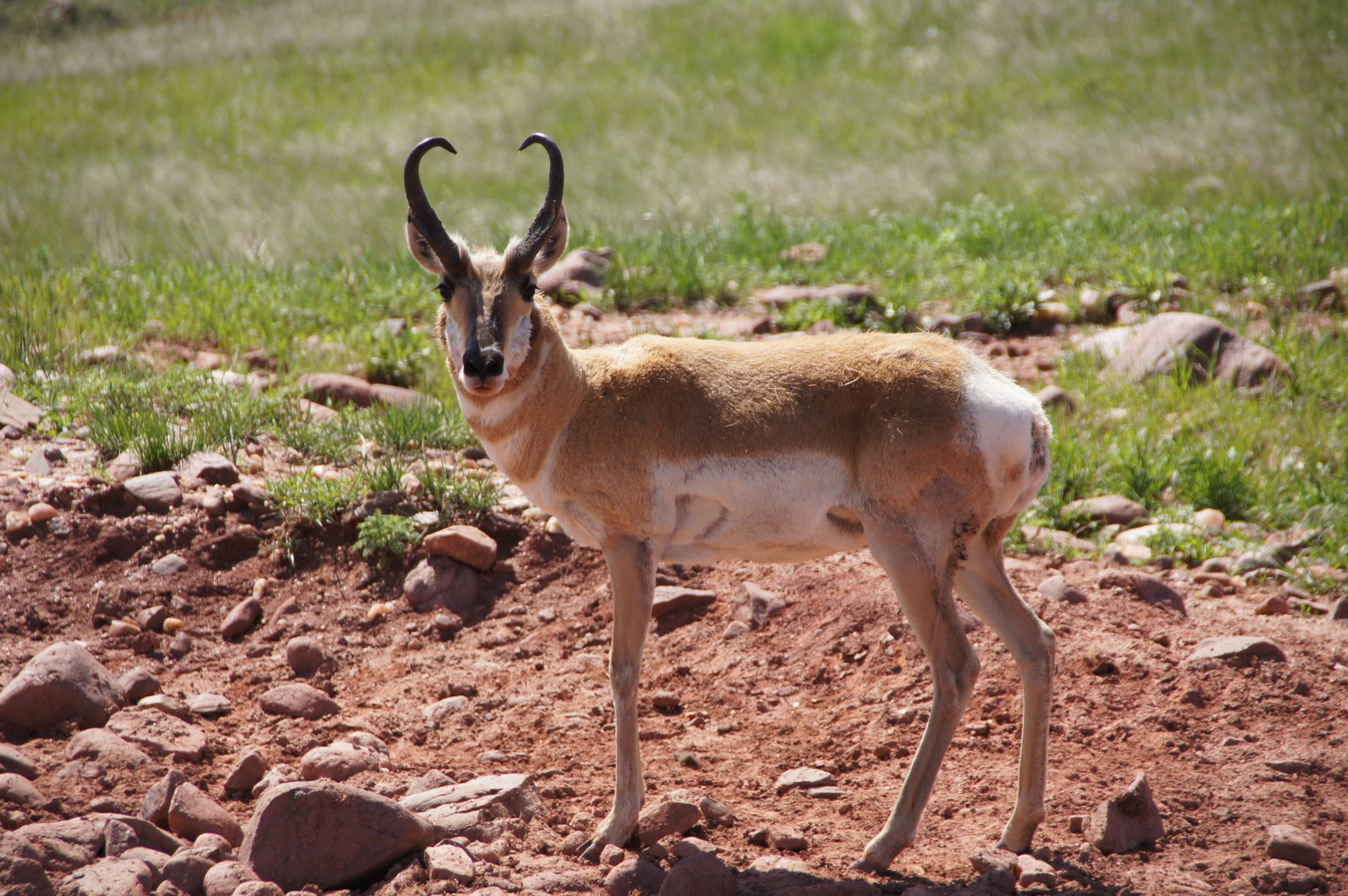
The road winds through hills and open areas of the Black Hills and after 18 miles, we reach Custer State Park.
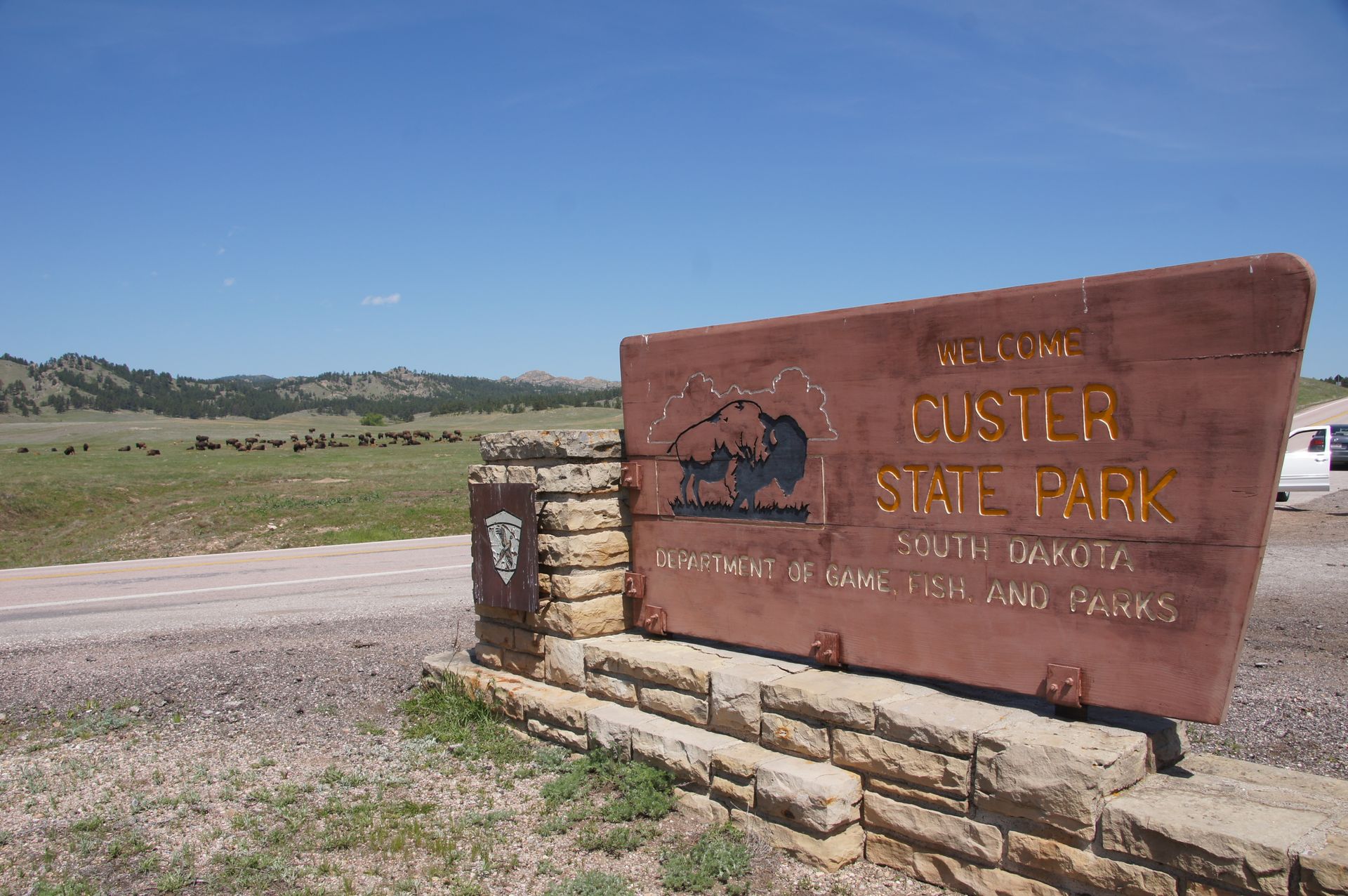
We can't explain how a state park can be named after a person who has caused the deaths of hundreds of people.
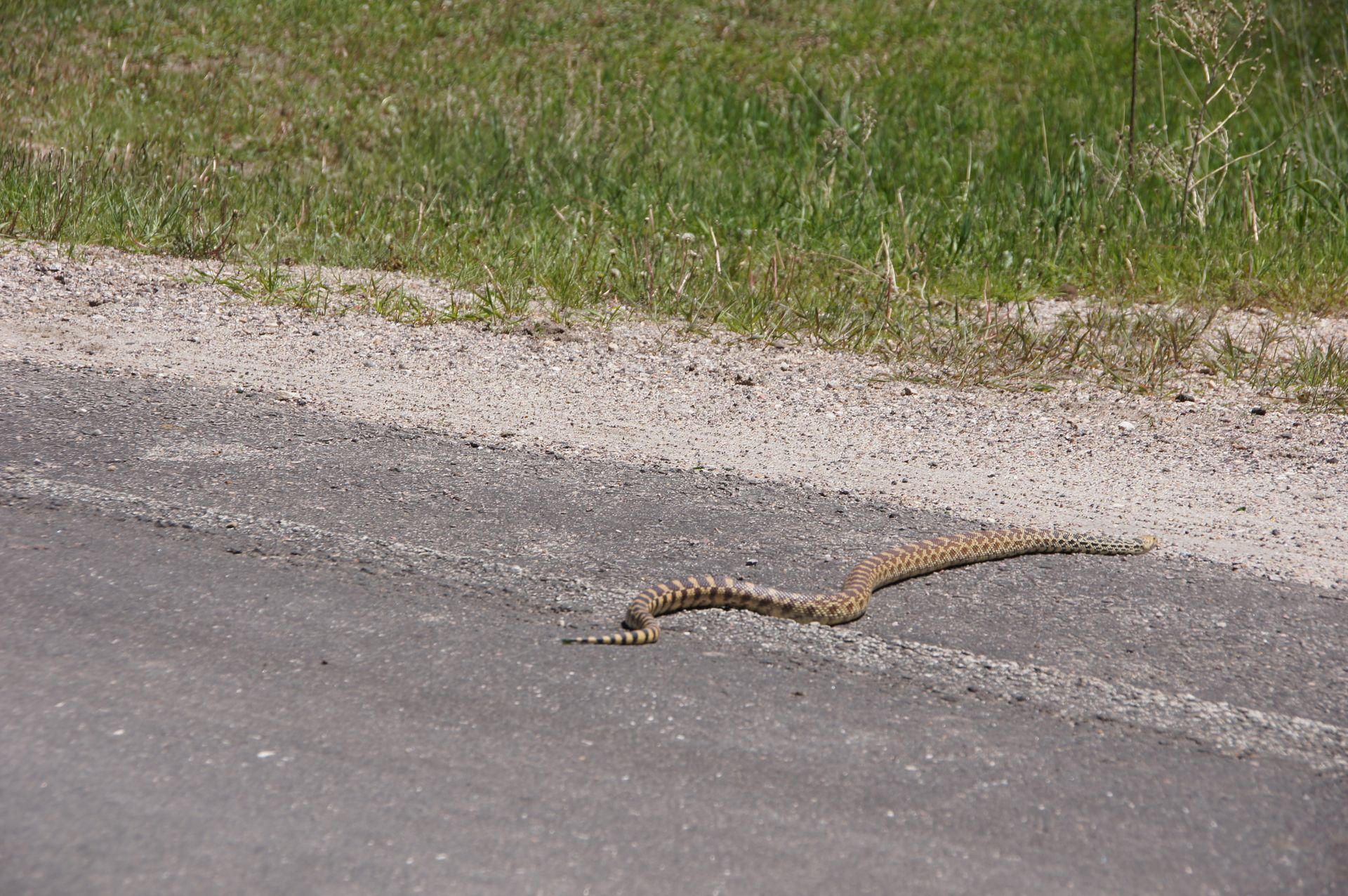
Custer was the one who led the famous Battle of the Little Bighorn in 1876 against the Native Americans, including Sitting Bull, Crazy Horse, and Big Foot. The Indian camp had about 2,000 warriors. Custer had significantly fewer soldiers on site, divided into three units to attack from three flanks simultaneously. The Indians quickly gained the upper hand, drove the troops and their boss onto a hill, and killed them all. This event is now considered a clear management failure by Custer, whose fatal result was far from an honorable act but rather the responsibility for the murder of hundreds of his soldiers. But after quickly burying Custer, the loser, he was buried a year later at West Point (the prestigious military academy) with all military honors. And they even dedicated a state park to this fool. God bless America!
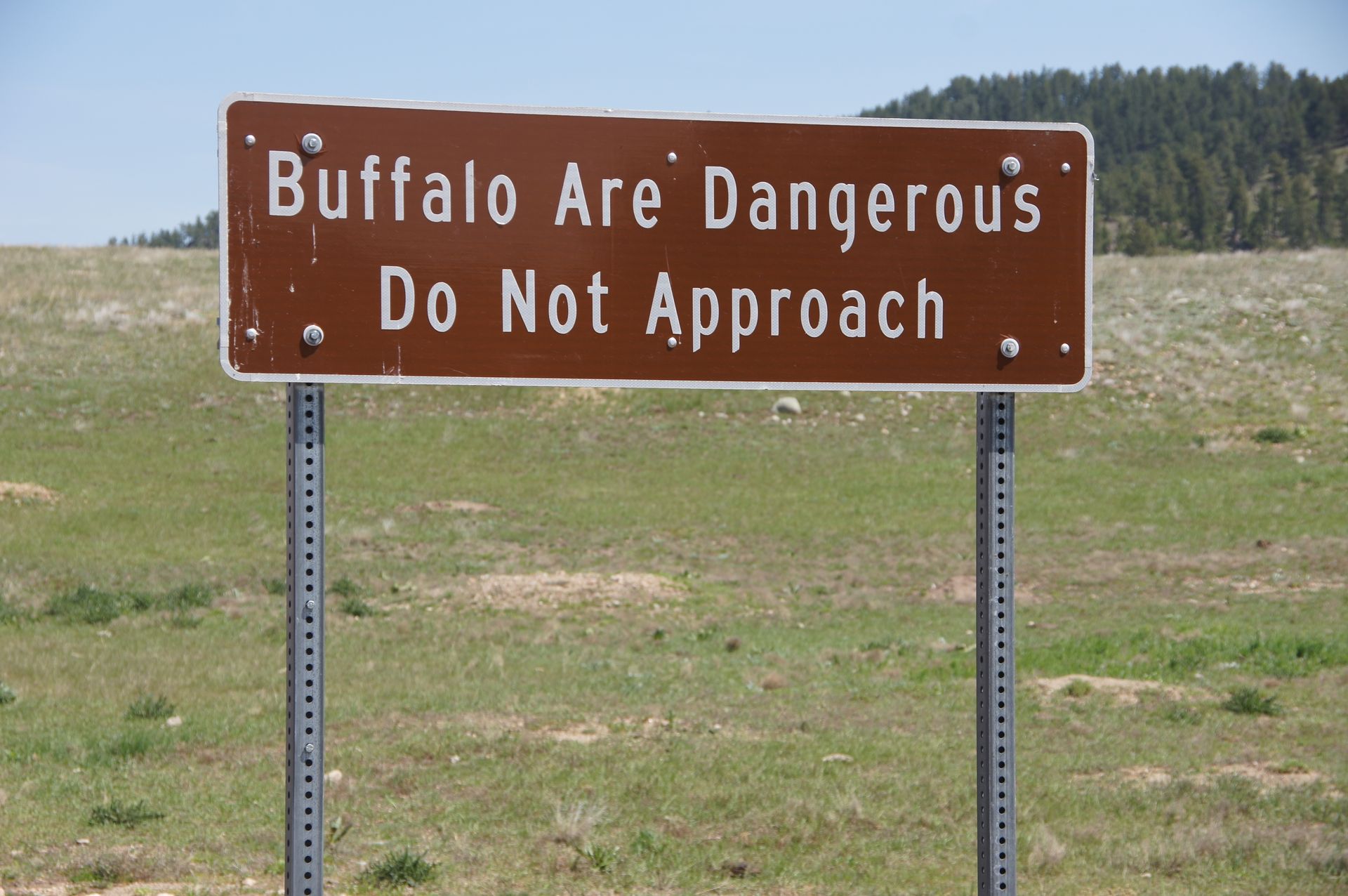
Well, we are in Custer State Park now, where about 1,500 Bisons live, making it the second-largest bison herd in the USA. The movie "Dances with Wolves" was filmed here. At first, we see hills and trees and hills and trees and, well, more hills and trees. Alongside the road, there are plenty of prairie dogs keeping watch on their burrows. But then we see bisons, not one, not two, but really a lot of bison, and a large herd of mother bison with their calves. By the time we leave the state park, we will have seen several hundred bison.
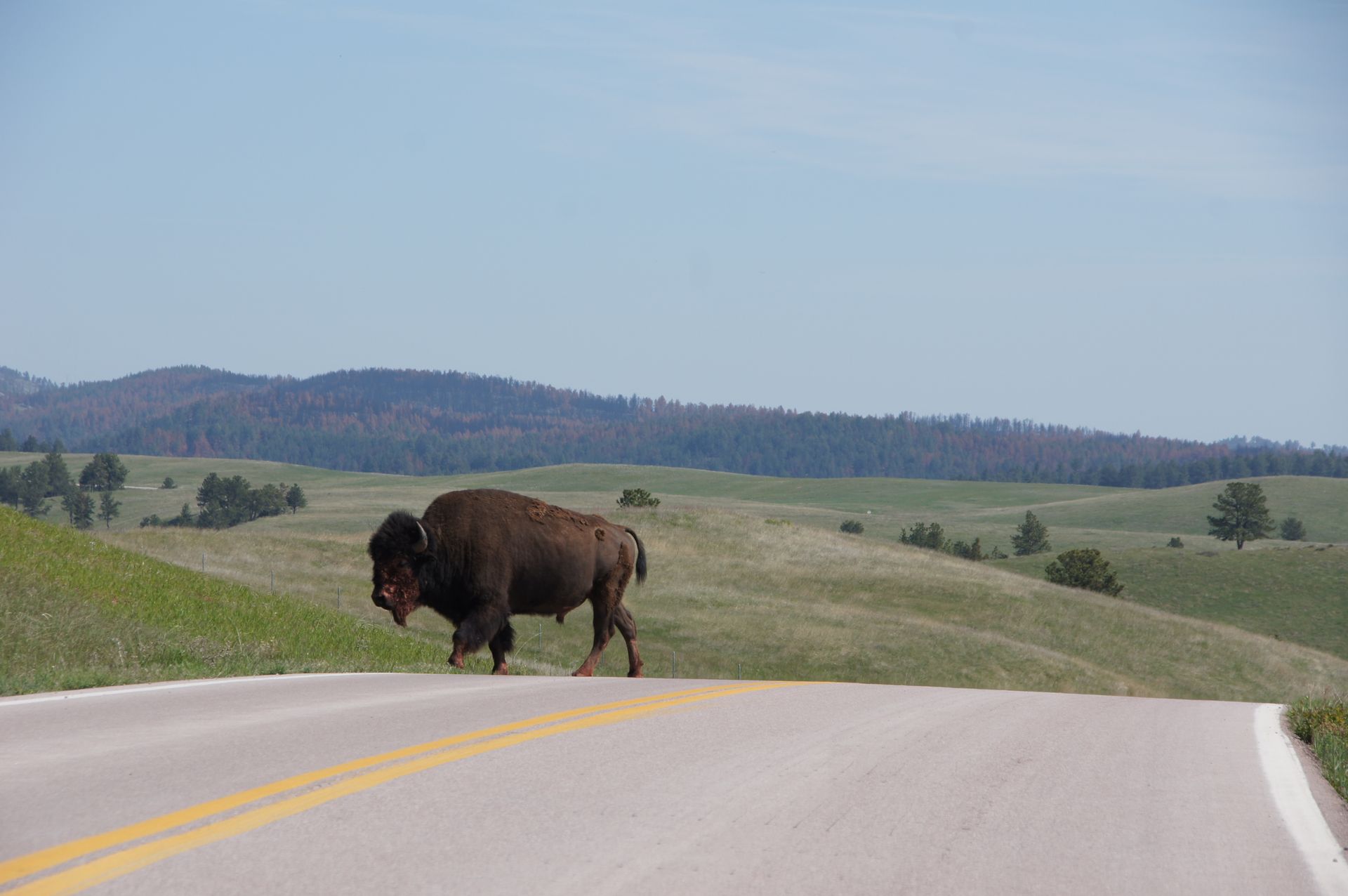
The staff at the visitor center told us that the beasts leave us alone if we leave them alone, but we should not approach mother bison with their calves. We follow this advice, but we are not always right next to the car when we see one of these giants or when they cross the road in front of and behind us.
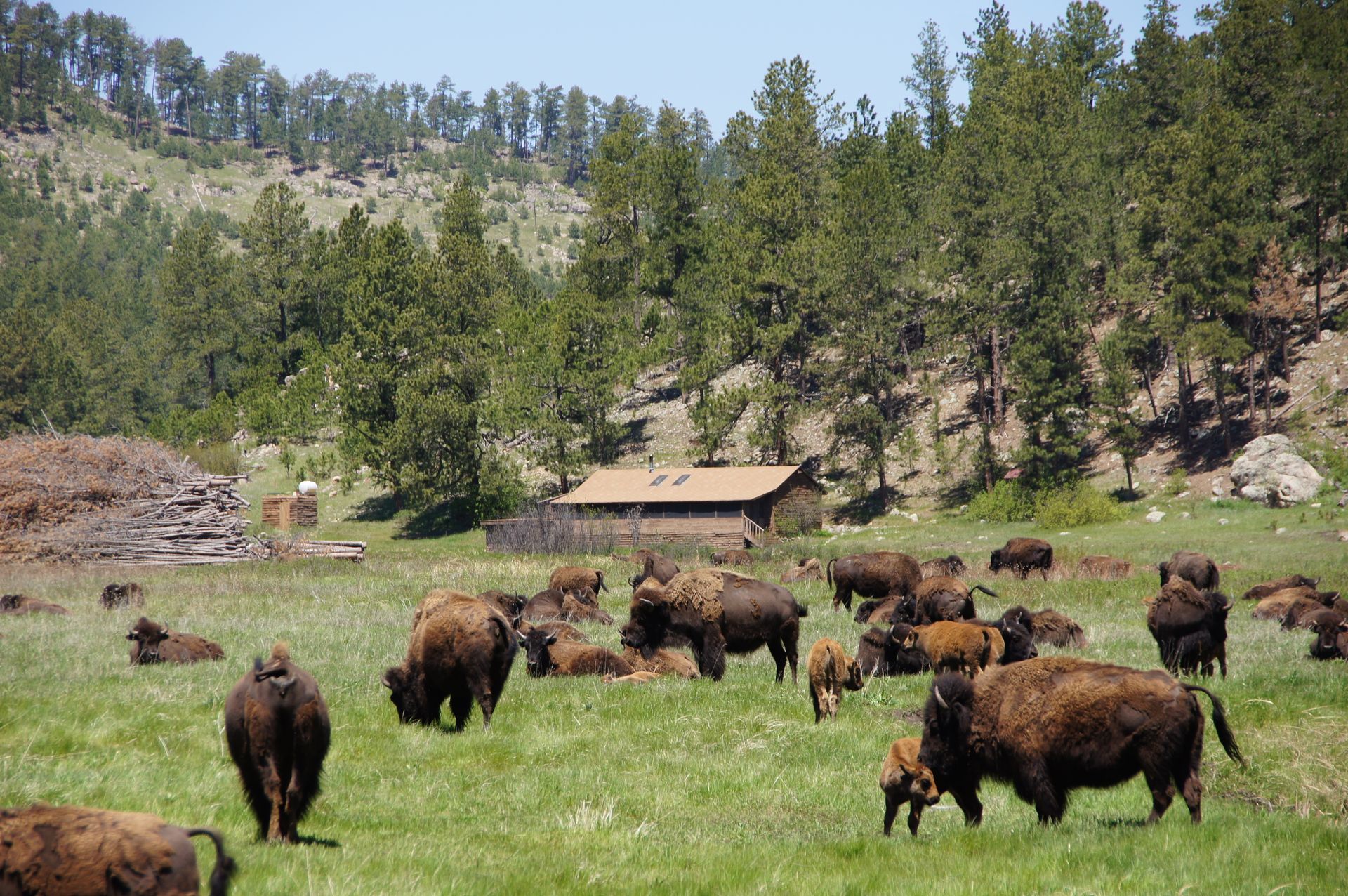
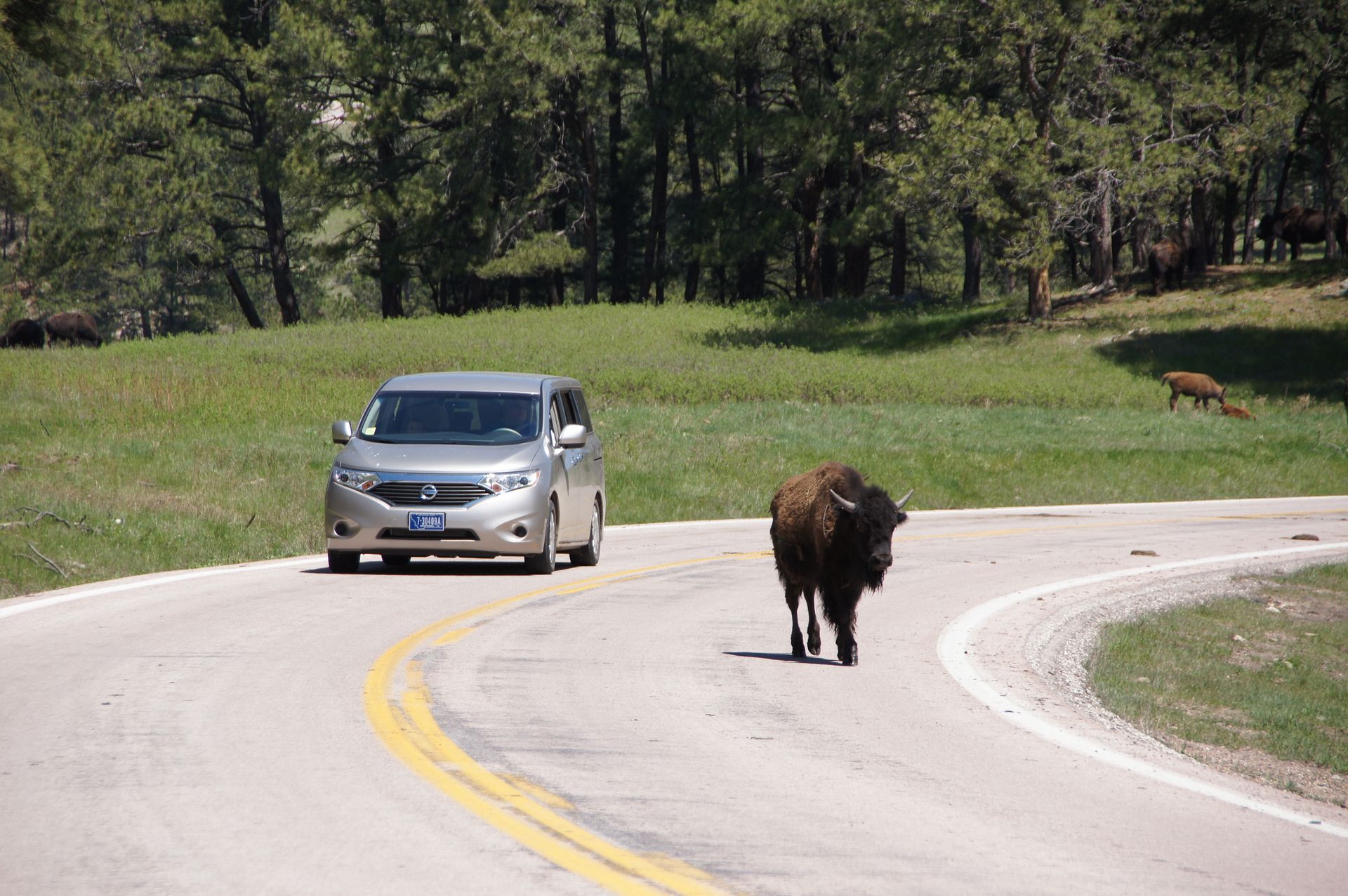
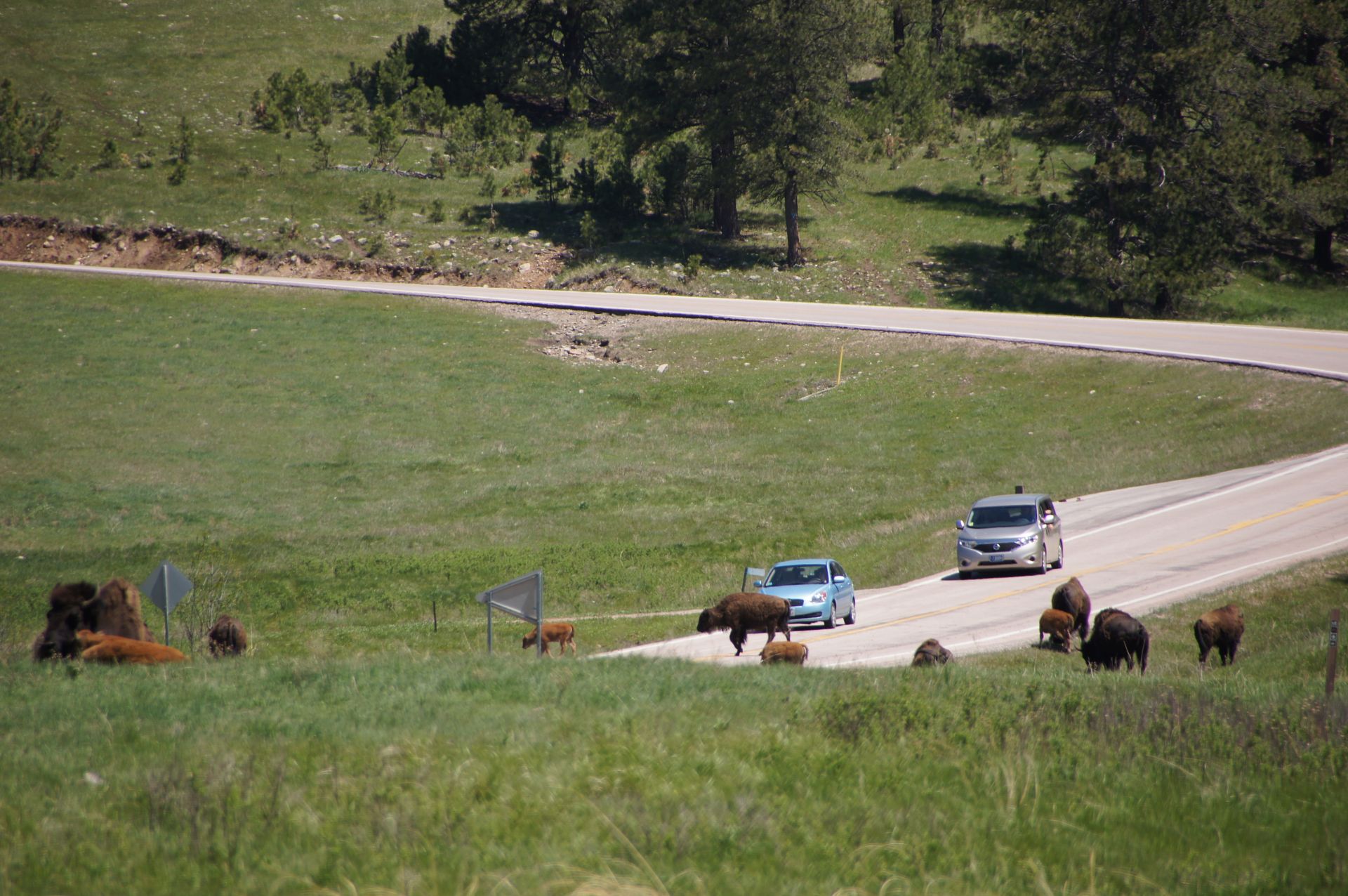
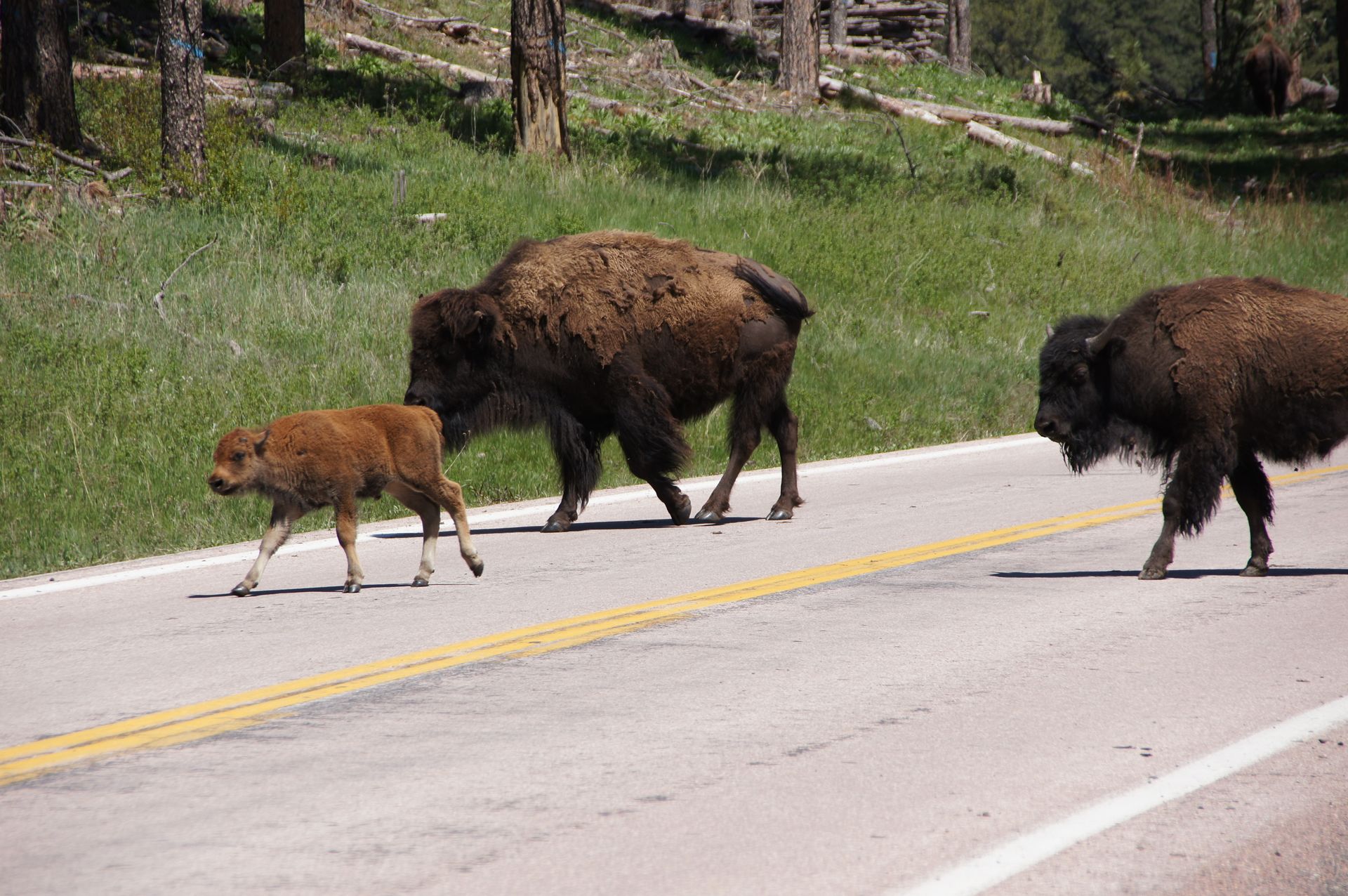
The animals are impressive, and if you think of prehistoric cave paintings, you can assume that these creatures have been roaming the world since ancient times. Yaks, the Asian mountain animals, are genetic relatives of bison. They weigh easily 900 kilograms but can run up to 50 km/h. With their thick fur and good layer of fat, they are able to survive the winter in the Rocky Mountains. Their extreme neck muscles also help them push away deep snow with swinging head movements to find grass underneath.
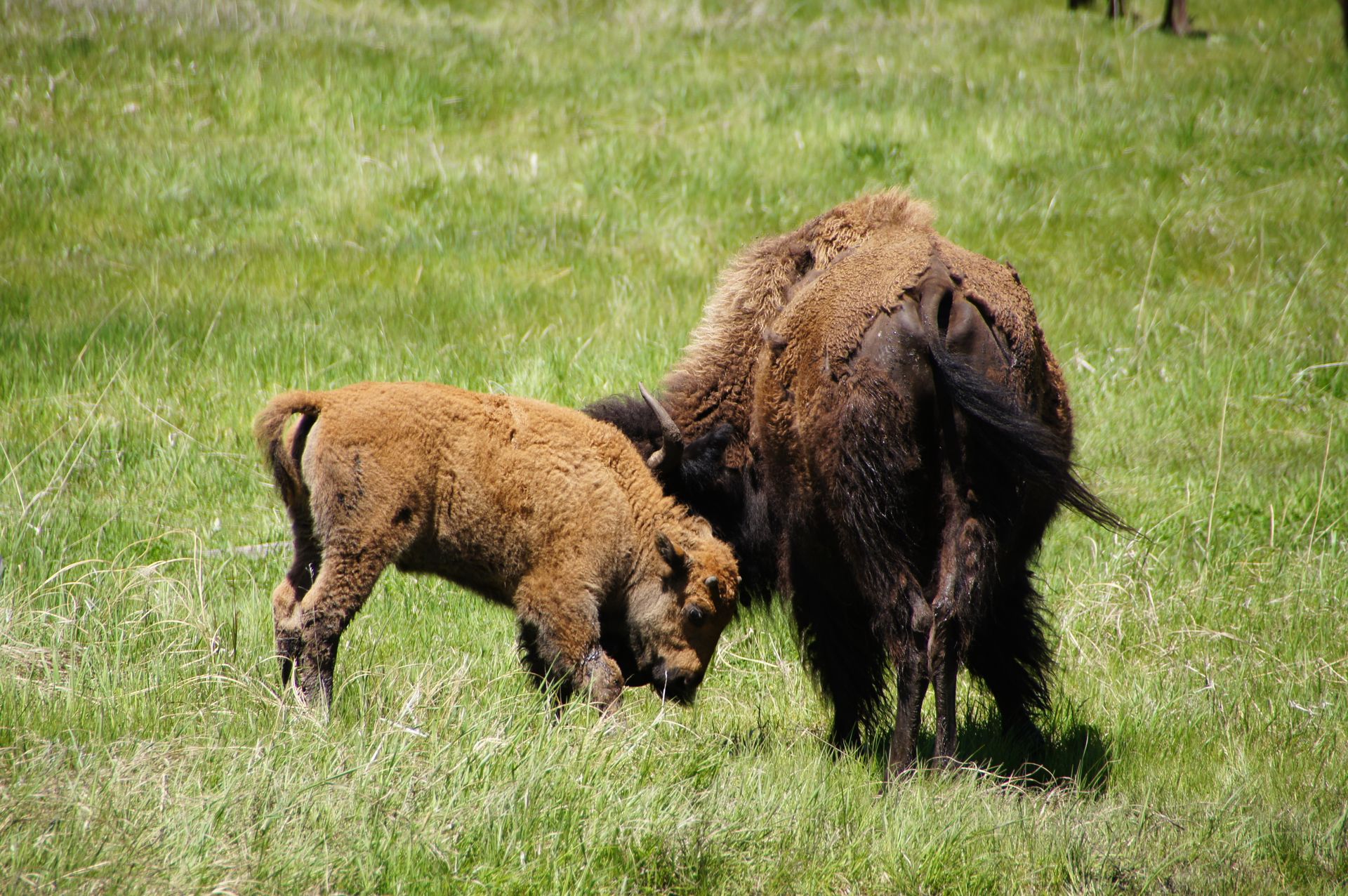
We still see a lot of pronghorns and enjoy this great drive. The so-called Wildlife Loop of 18 miles is quite a long tour due to numerous photo stops and our very slow pace. We stop at a parking lot where wild donkeys have taken over a spot that tourists apparently like to feed. As a result, the donkeys have become quite aggressive and look into people's cars through open windows and snatch sandwiches out of their hands. They also like to stand in front of and between cars, making it impossible to leave.
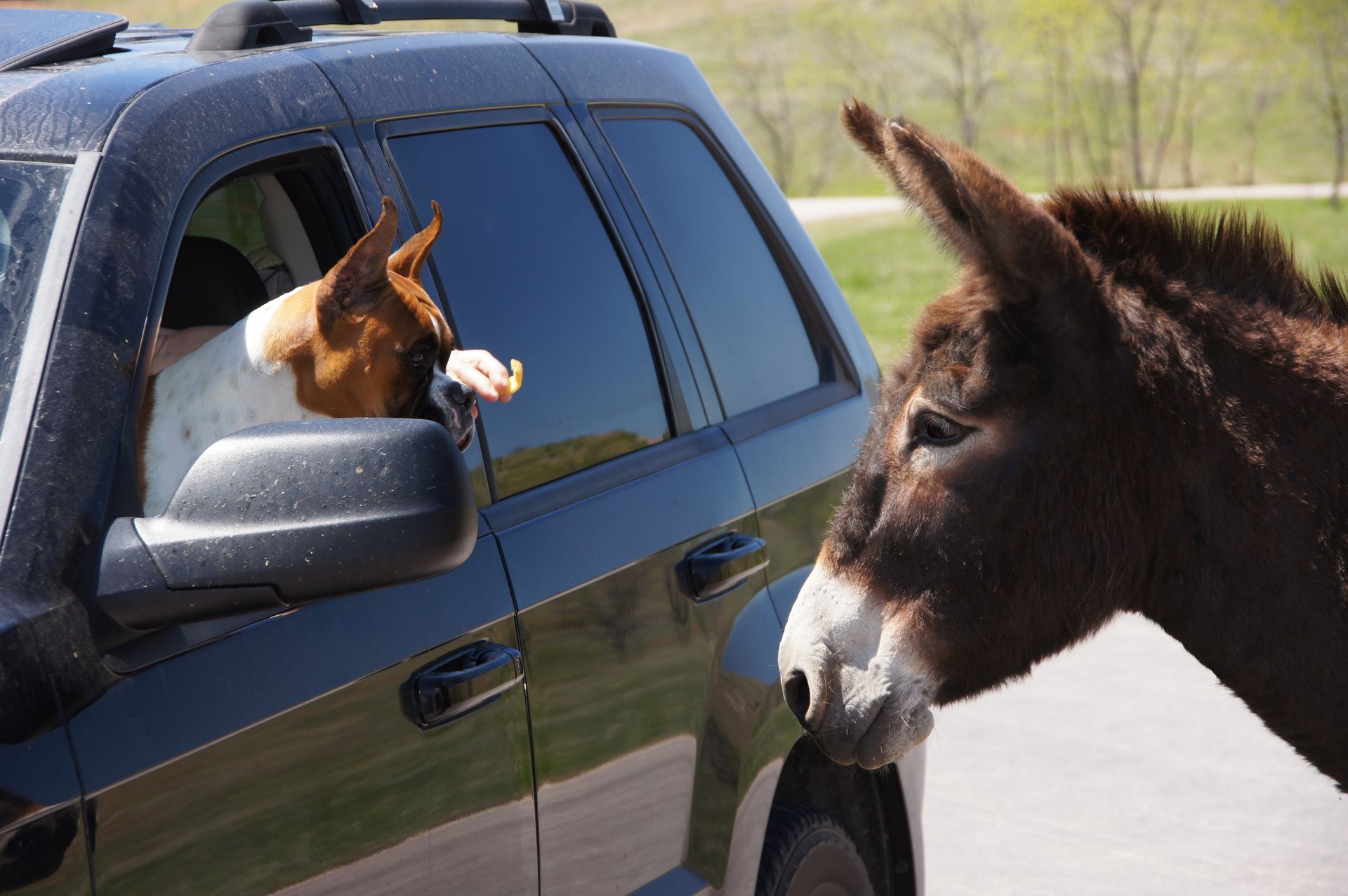
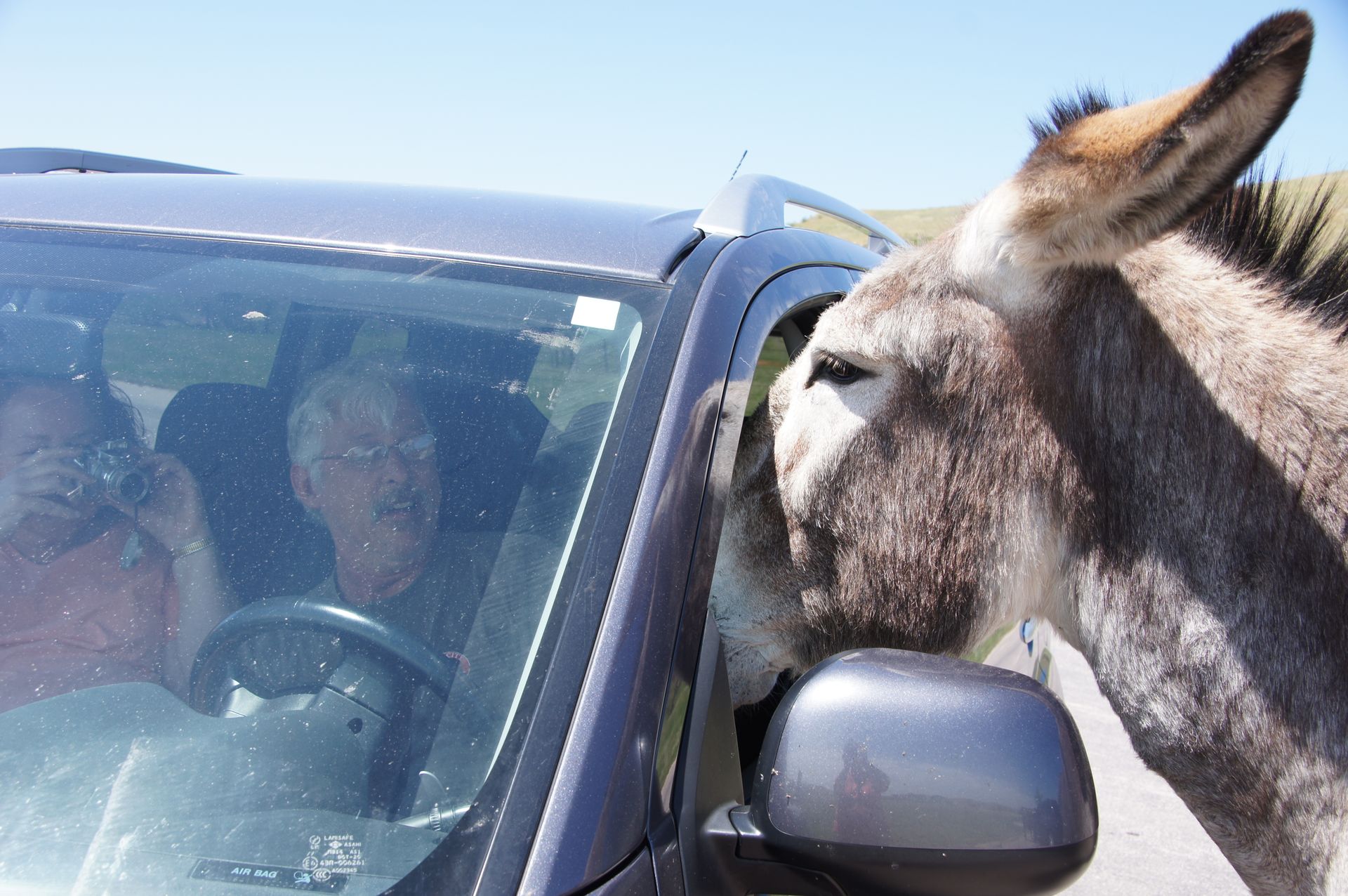
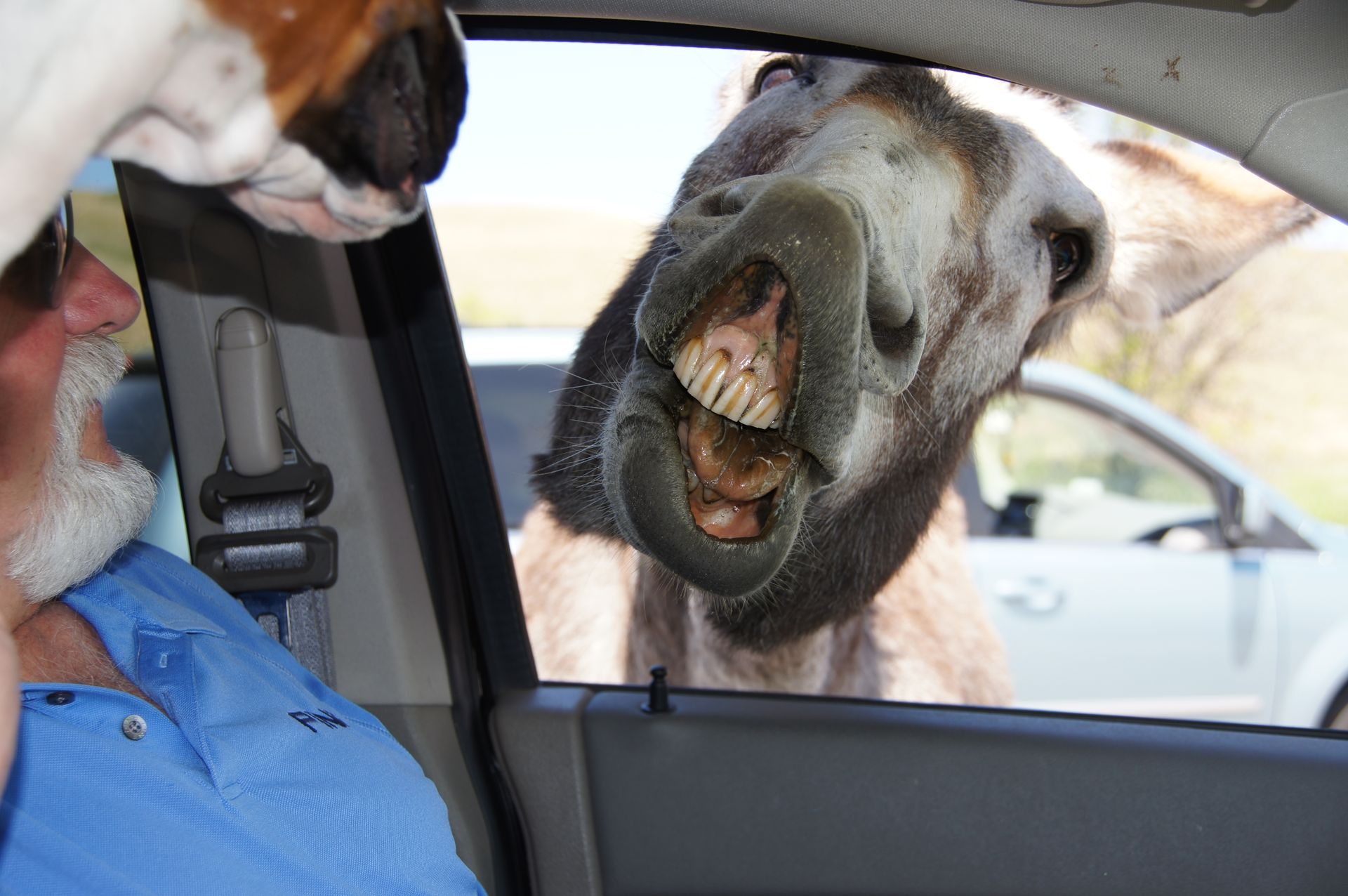

Parked
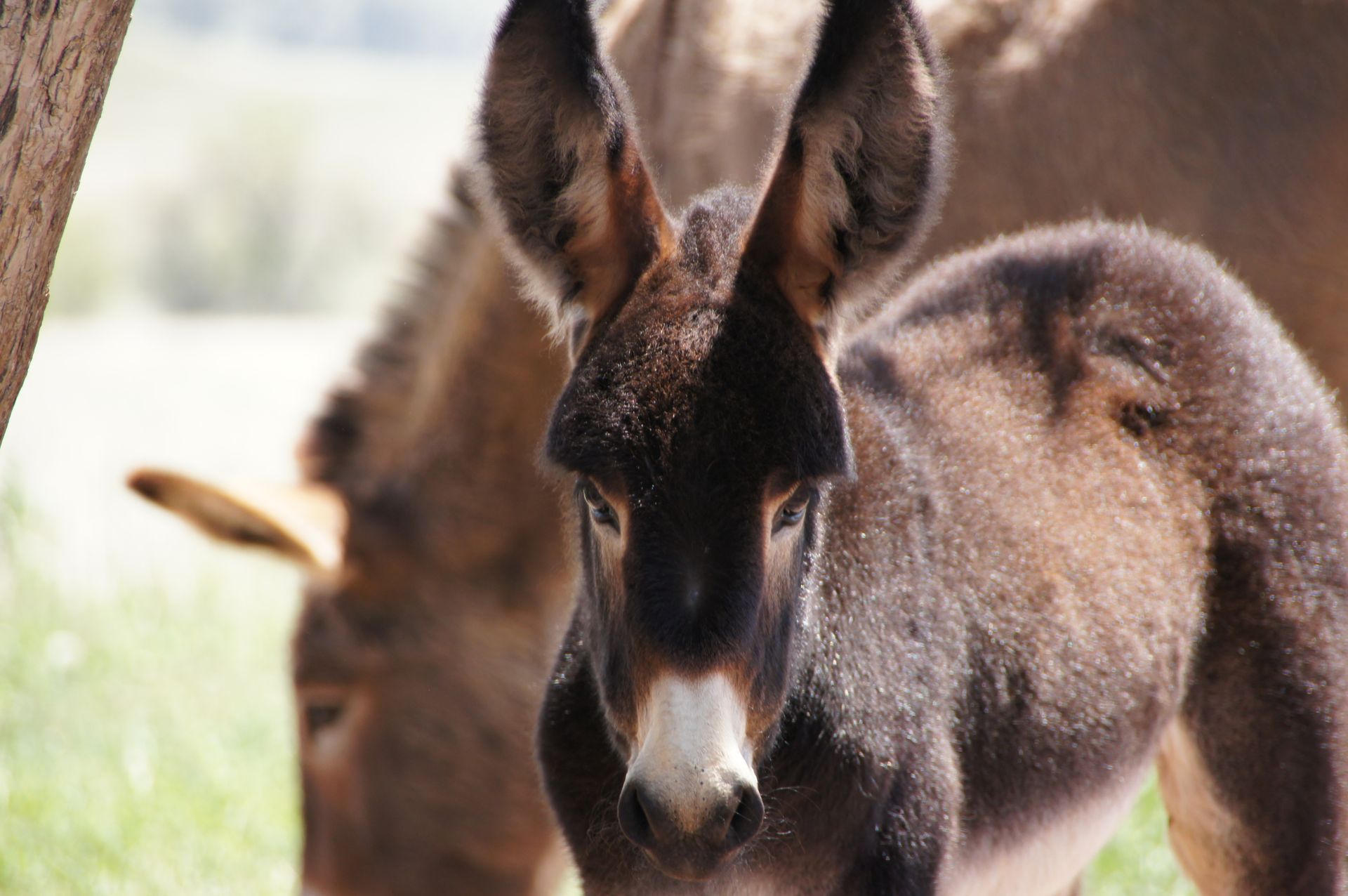
After these animal encounters, we get off to a slightly delayed start and reach our next destination, Mount Rushmore, around 14:00.
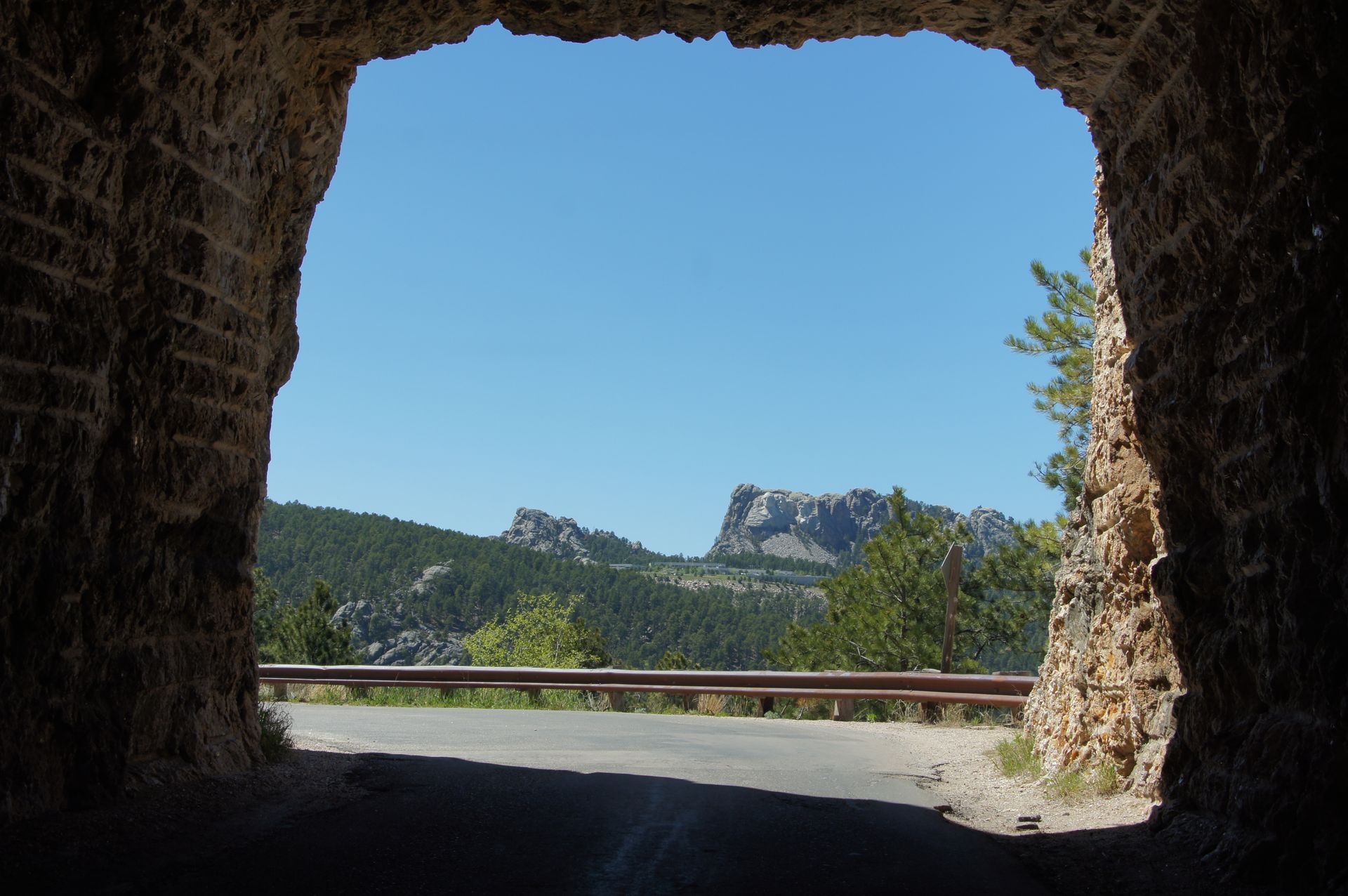
We walk through the flag-lined alley towards the rock heads that we have already seen several times on the way here. There is a strong wind again. We take some pictures and walk a short path just below the noses.
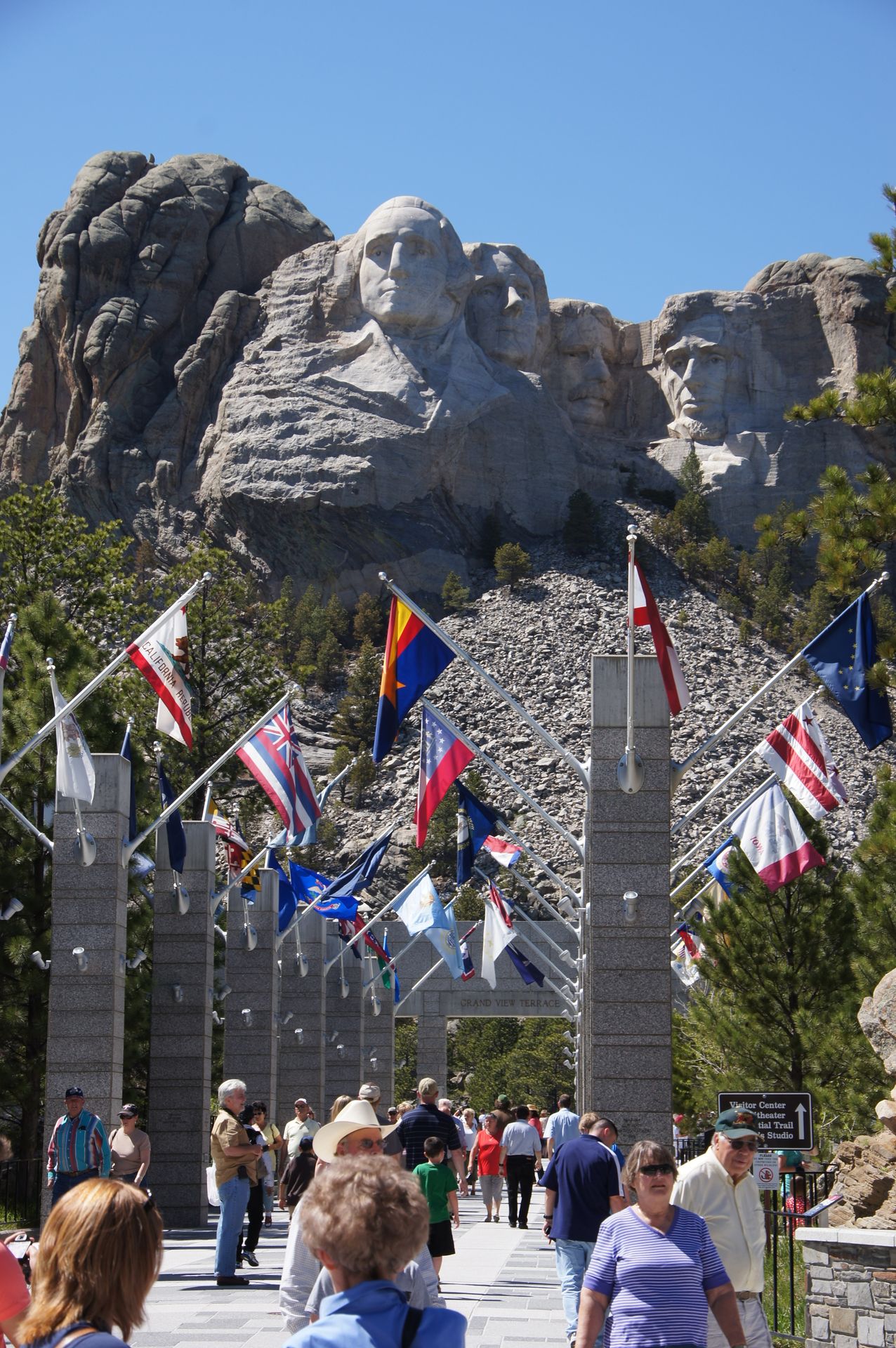
The four presidents immortalized here are the most significant US presidents, and each head is about 18m tall. From left to right, George Washington, Thomas Jefferson, Theodore Roosevelt, and Abraham Lincoln are looking at us. The first head to be carved was George Washington's in 1930. Jefferson followed six years later, then Lincoln, and finally Roosevelt in 1939.

As is often the case in the USA, this monument/national memorial was created on a sacred Indian mountain. The Lakota people are native to this area and naturally consider this monument a desecration of a sacred place.
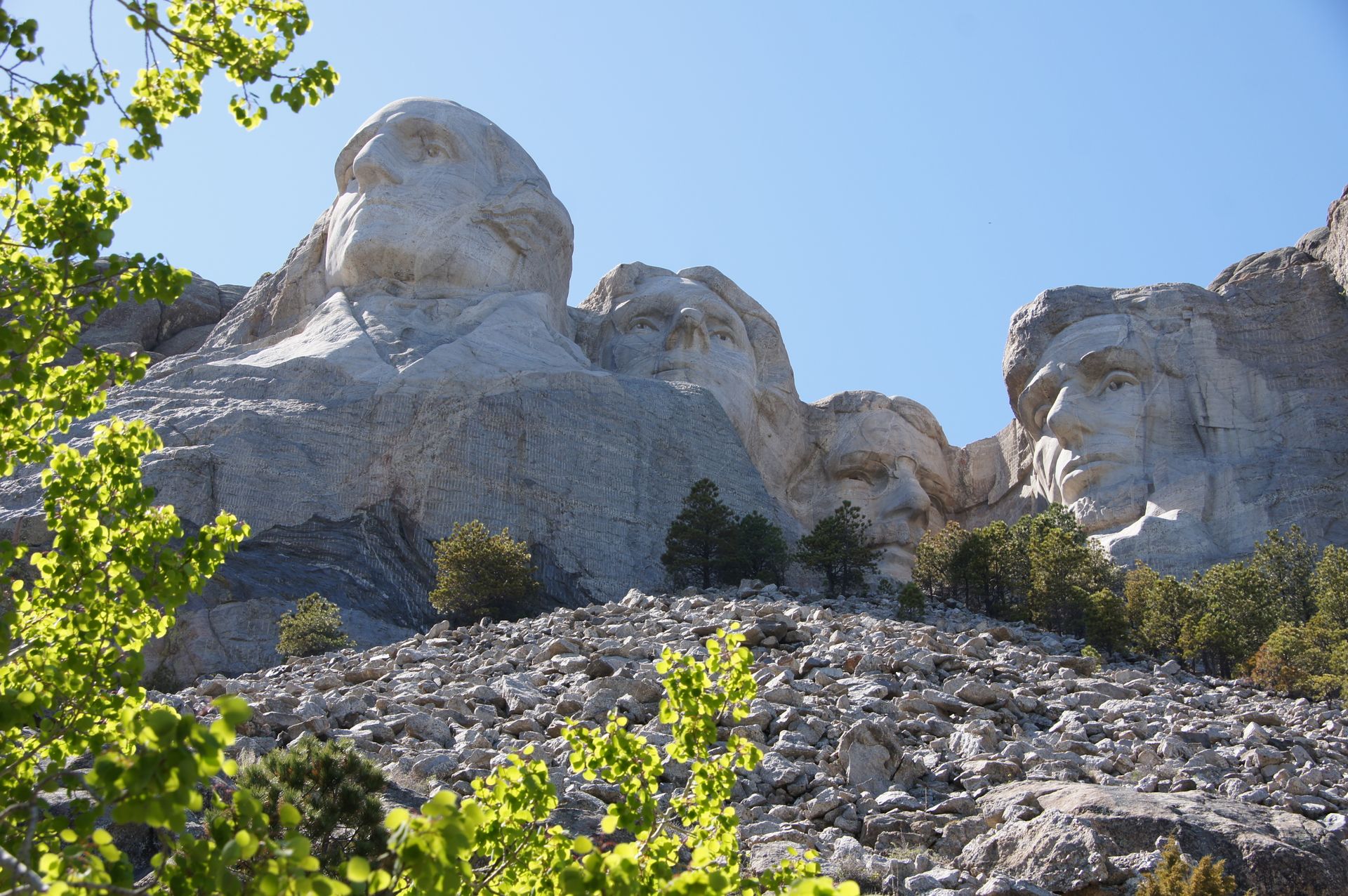
By the way, the mountain is called Mount Rushmore thanks to a lawyer from New York who acquired the gold mining rights in the Black Hills.
We have a cola in the shade and continue past the Crazy Horse Memorial. We decide not to spend the $11 admission fee there; we'll come back in another 100 years when it's finished.

Because that will surely take a long time.
Crazy Horse (one of the Indian chiefs who defeated Custer) belonged to the Oglala Lakota tribe. In his honor, in 1939, Polish-born sculptor Korczak Ziolkowski began work on this sculpture. He had previously contributed to the heads at Mount Rushmore but was then invited by Sioux Chief Standing Bear to design and create an Indian monument. Work began in 1948. The project is not funded by the state but solely by a nonprofit foundation. When Ziolkowski died in 1982, his widow and several of his children continued to pursue the project. When and if it will ever be finished is unclear. By the end of the 1990s, at least 10 tons of rock had been blasted away, but only the silhouette of the face is finished, which can be seen very well from the road.
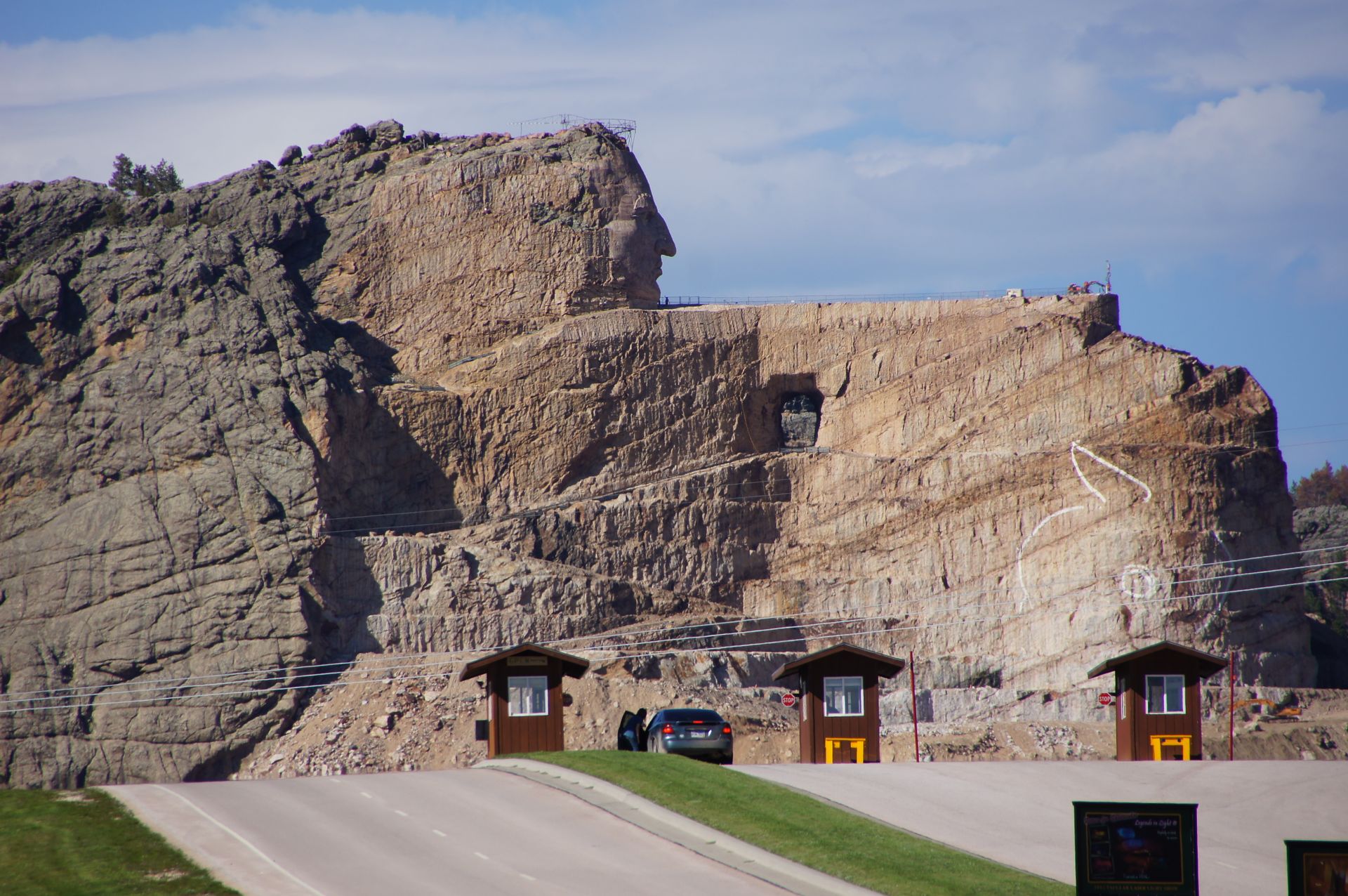
Crazy Horse Monument - June 2011
Since this likeness is also being created in the (sacred) Black Hills, it is also controversial among Native Americans. If it is ever finished, Crazy Horse will be depicted sitting on a horse with his arm pointing east. The entire sculpture is so huge that at 172m high and 195m long, it far surpasses the faces of the presidents in Mount Rushmore.
When we take these photos here in June 2011, the silhouette of the head is discernible.
It's just after 17:00 when we arrive in Hill City (311 inhabitants, so it's already a "medium-sized town" for us). Rooms at the Super 8 Motel are available for $71 including breakfast.
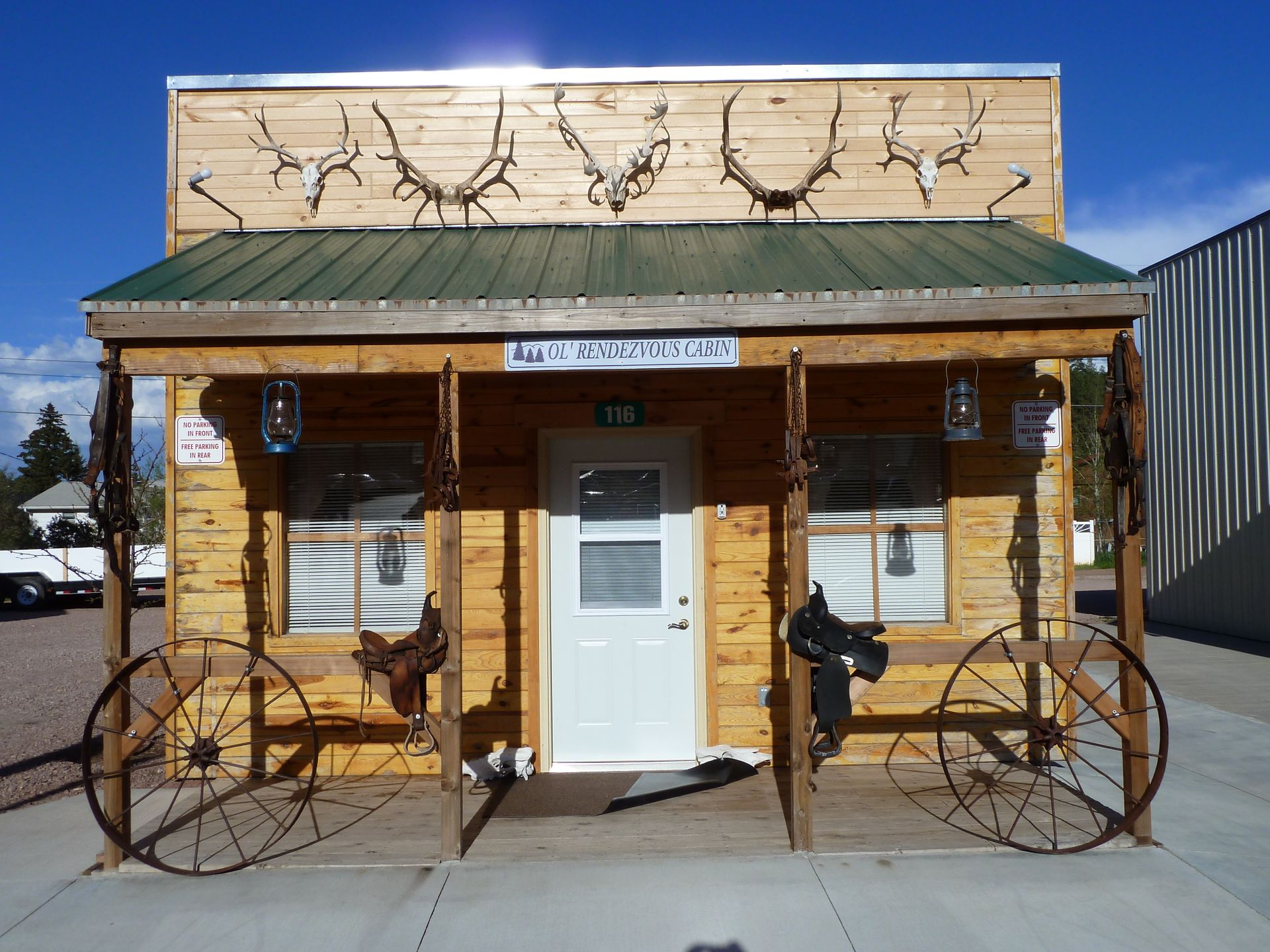
Hill City Main Street
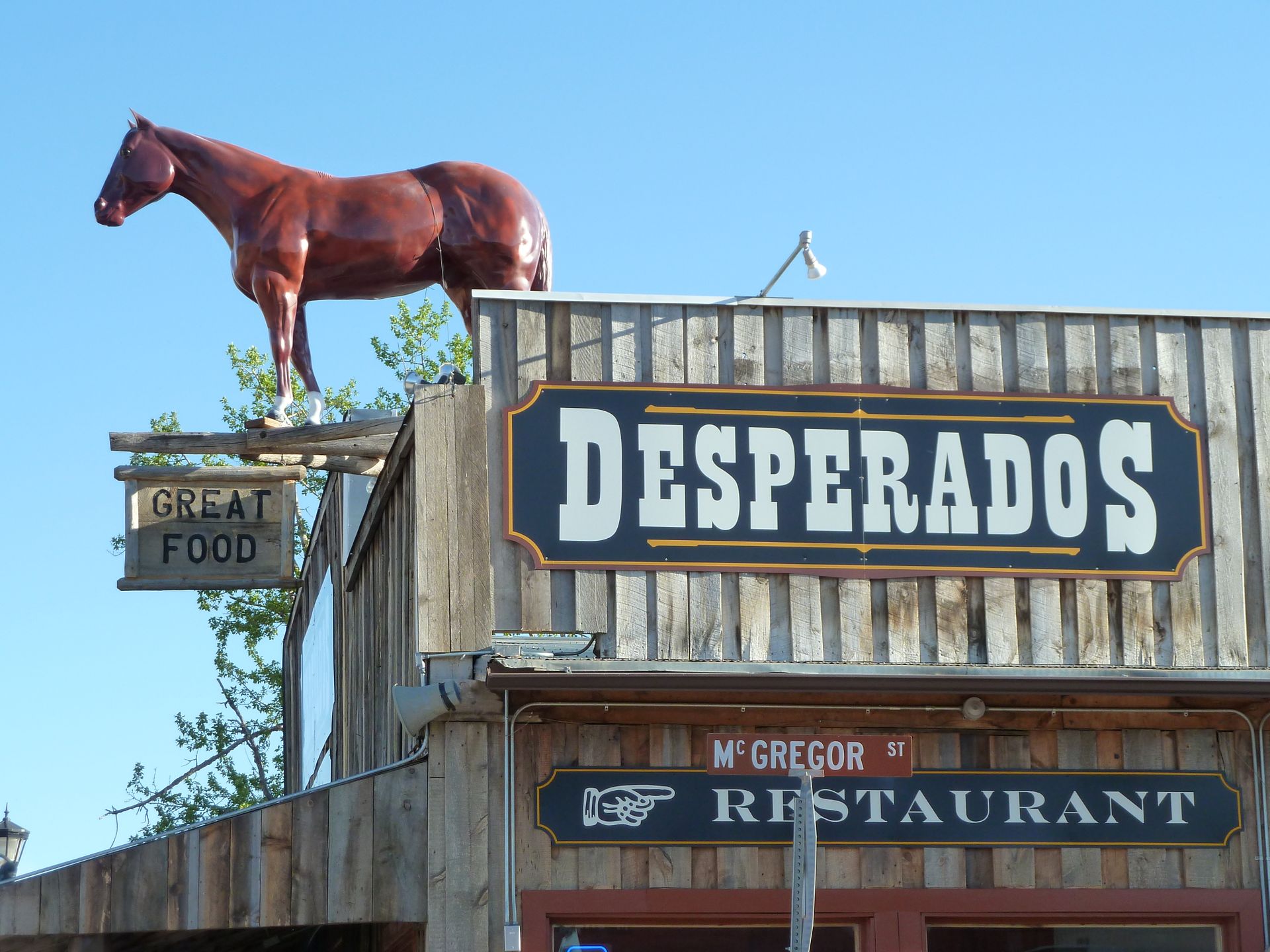
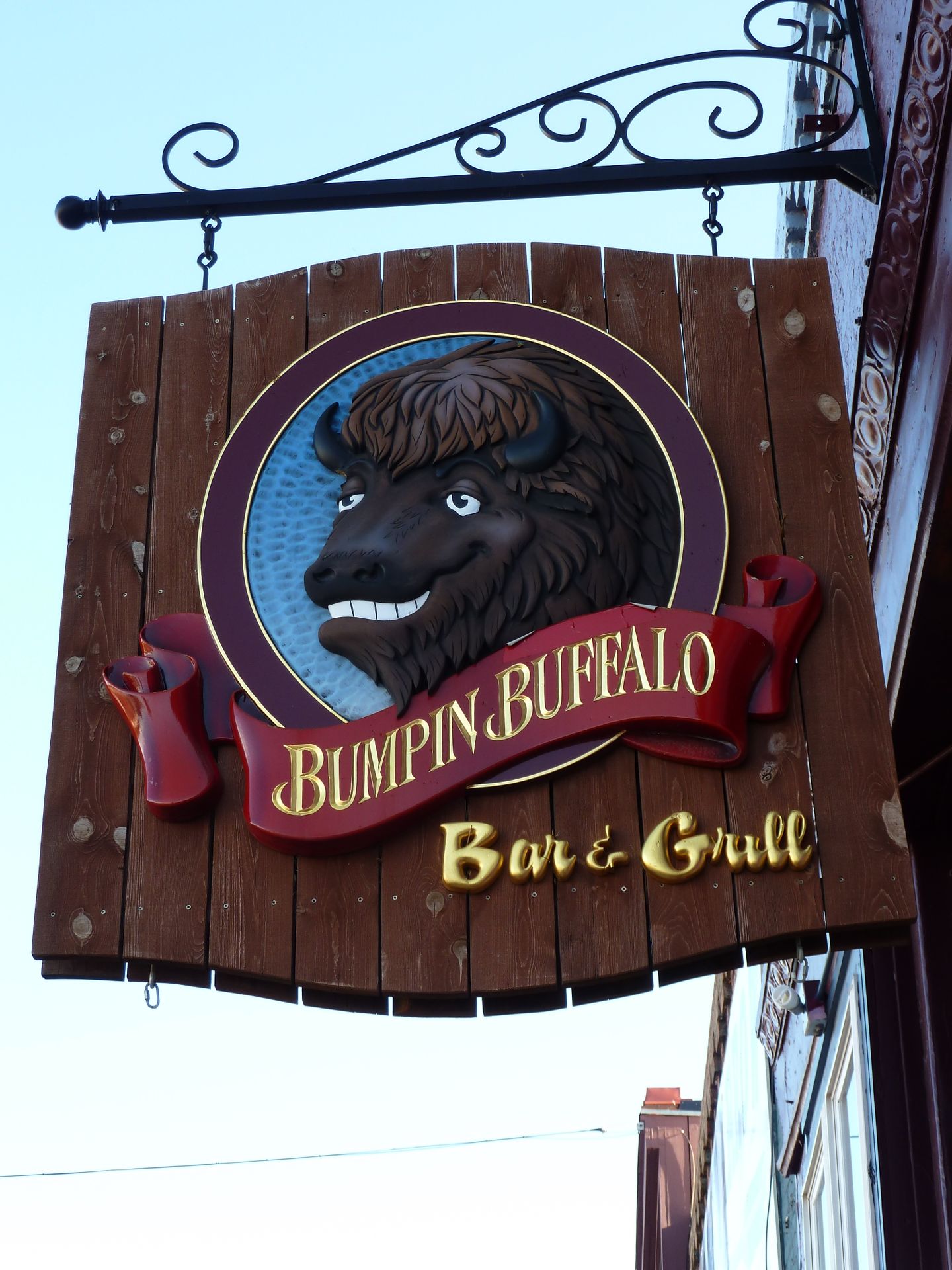
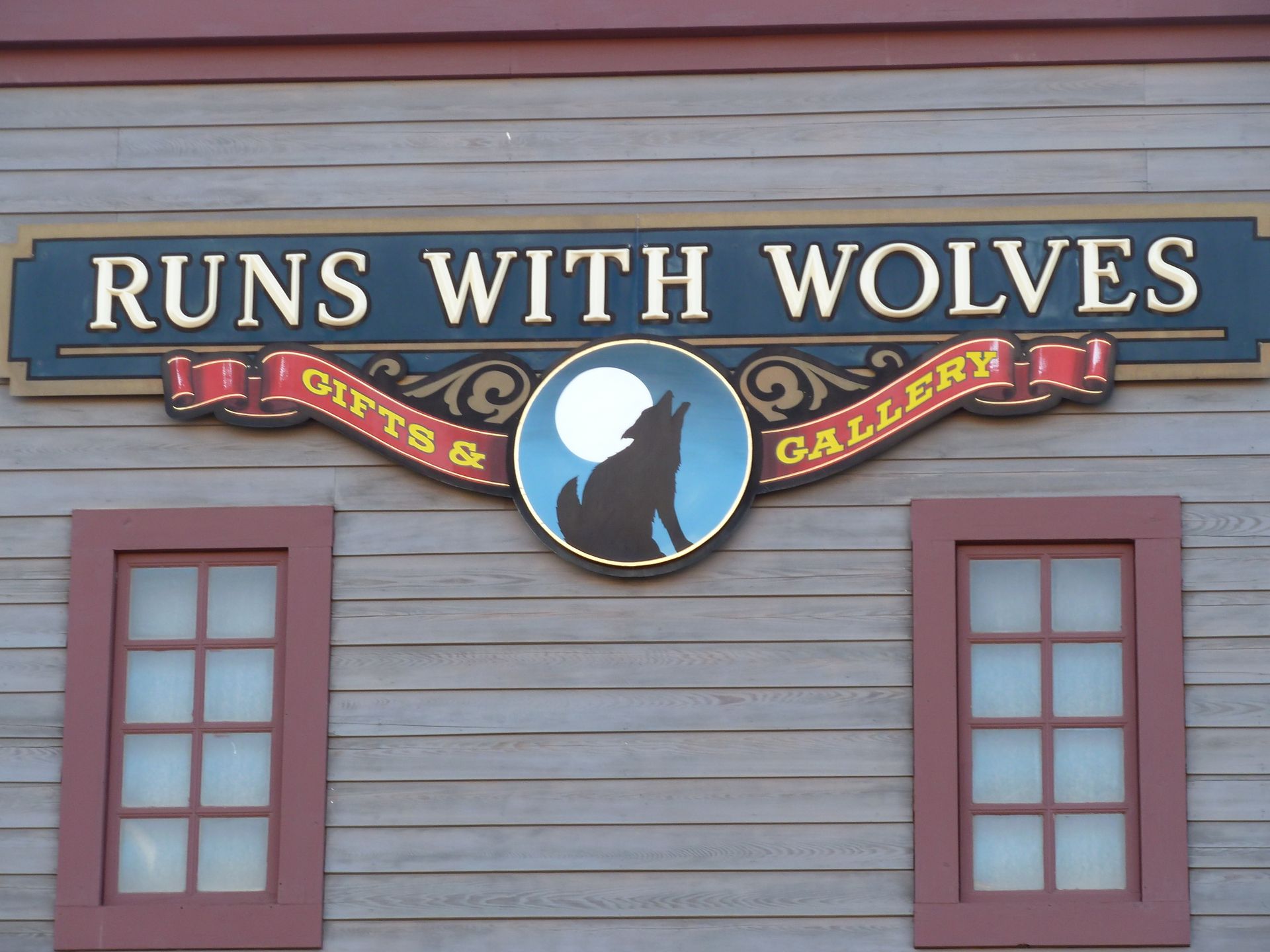
Hill City
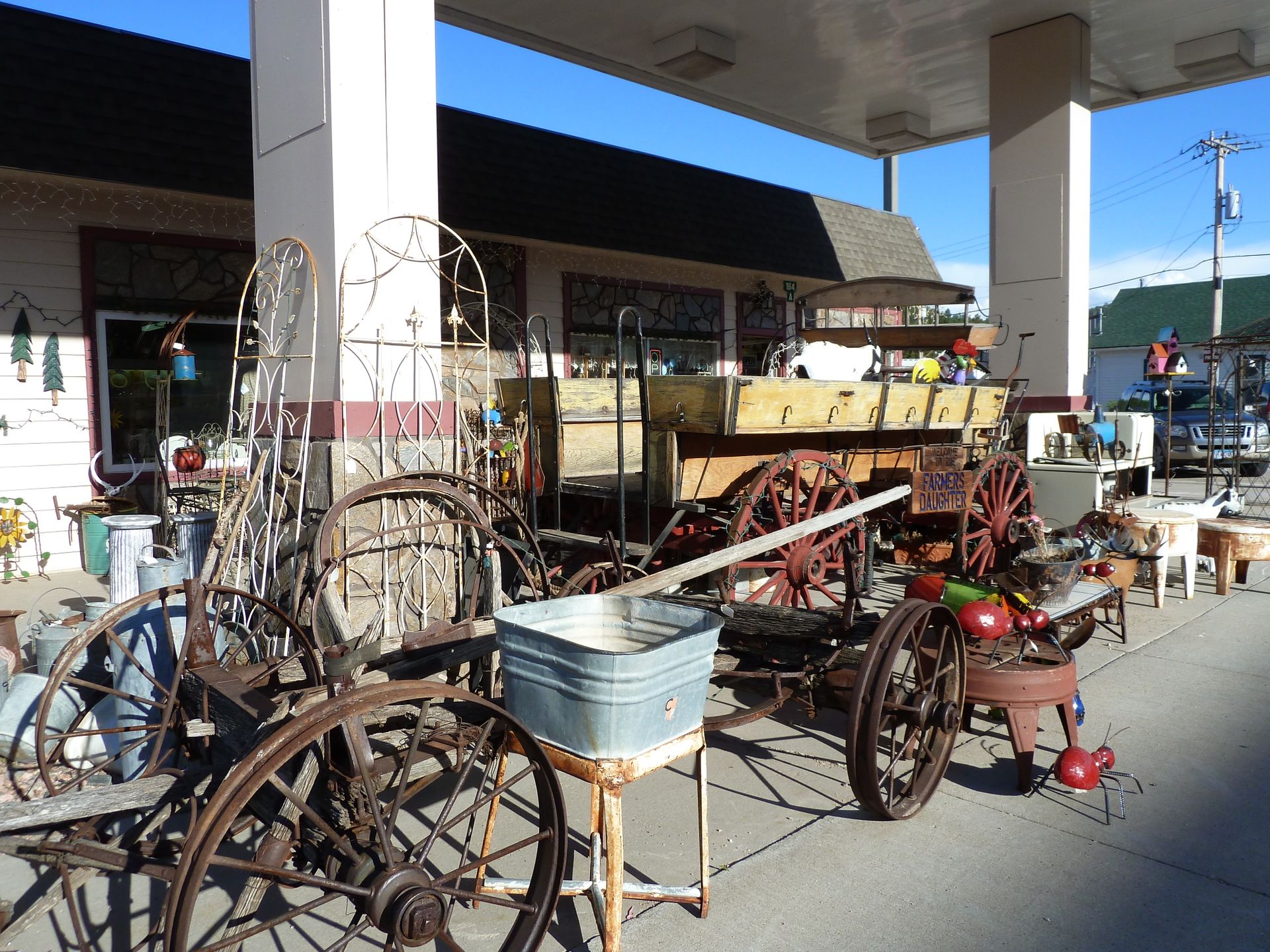
Hill City - General Store

Behind us, magnificent clouds form over a reservoir. After dinner, we sit on the porch of the Alpine Inn, "genuine European lodging," and treat ourselves to a bottle of Mondavi red wine while listening to the nice country music playing on the main street from various speakers on lampposts and building facades. The $16 bottle is a real bargain, and fortunately, the hotel is only 30 meters away.
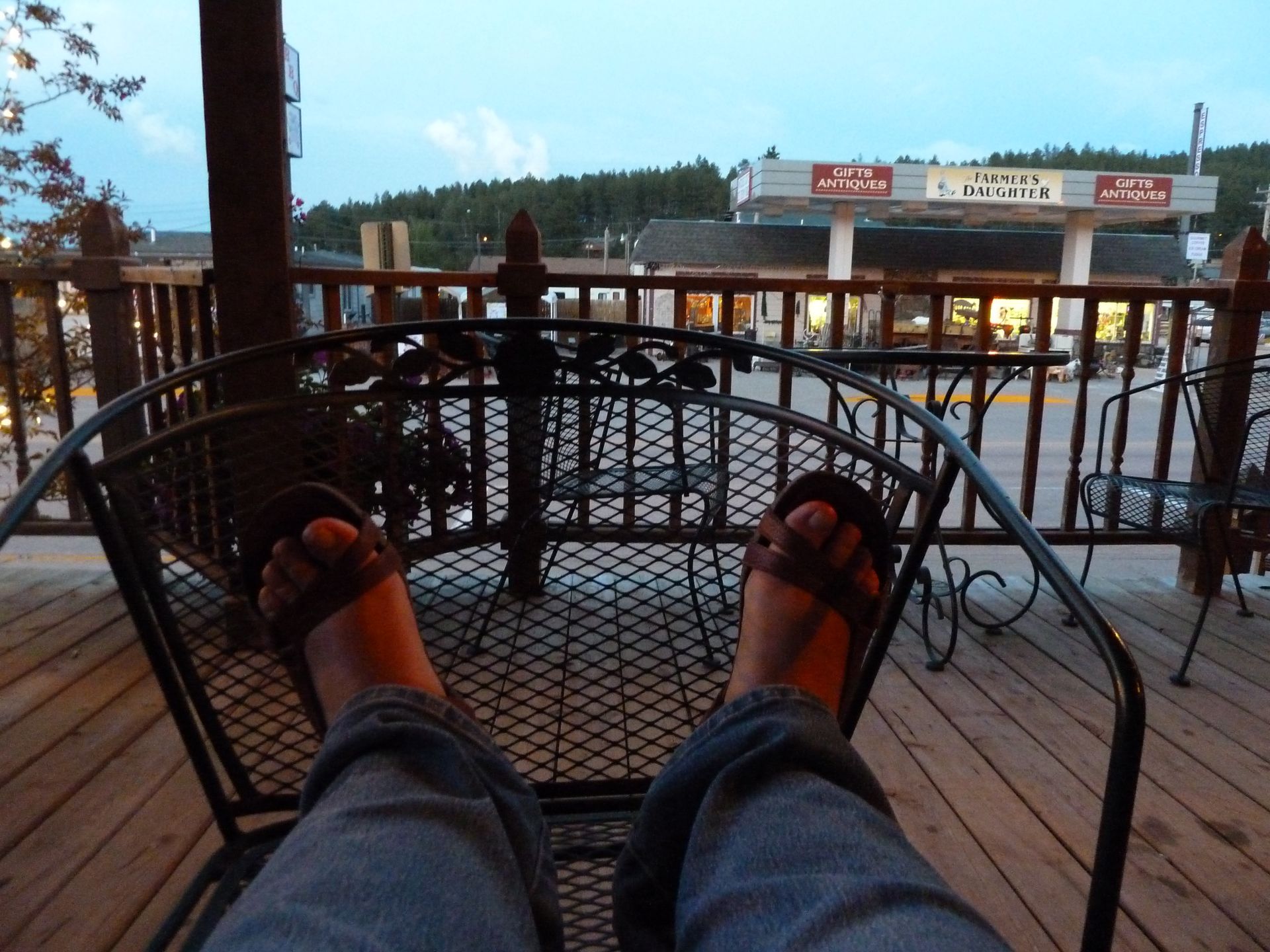
Cozy evening in Hill City

We plan to start early tomorrow and initially leave the Black Hills area to drive to the Badlands National Park.
వార్తాలేఖకు సభ్యత్వాన్ని పొందండి
సమాధానం
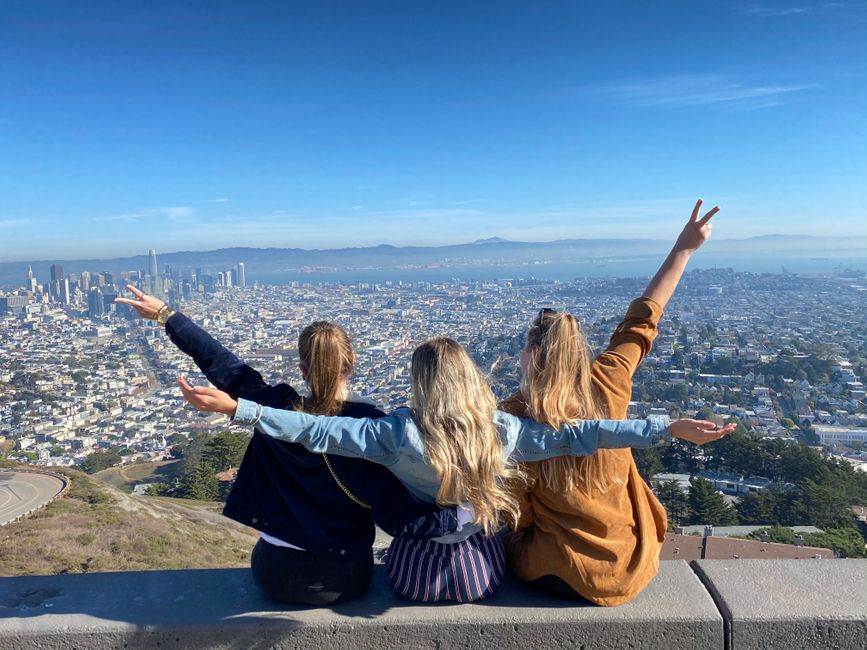
USA ప్రయాణ నివేదికలు

